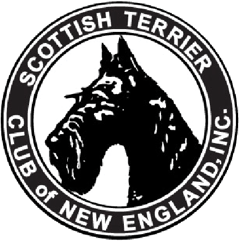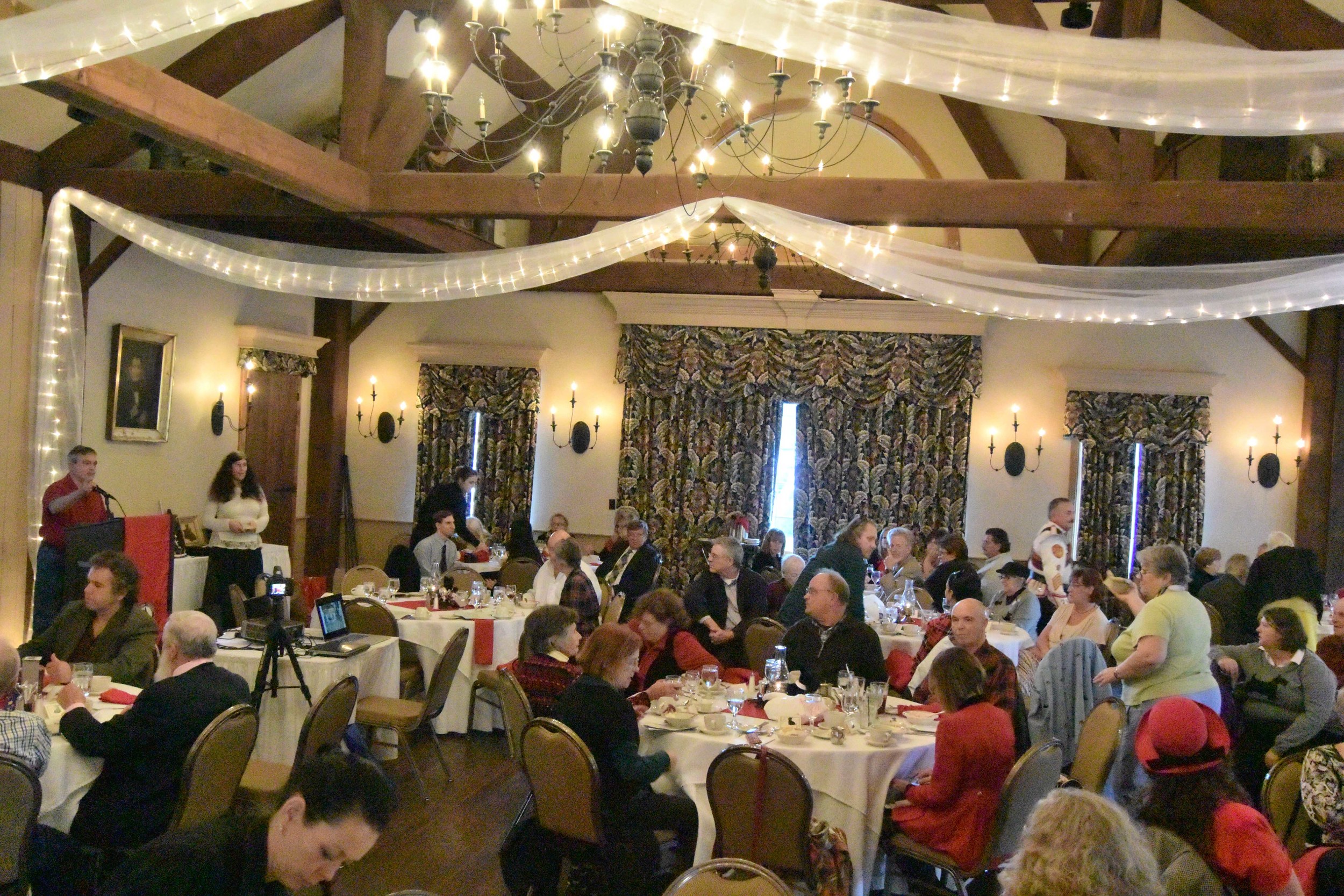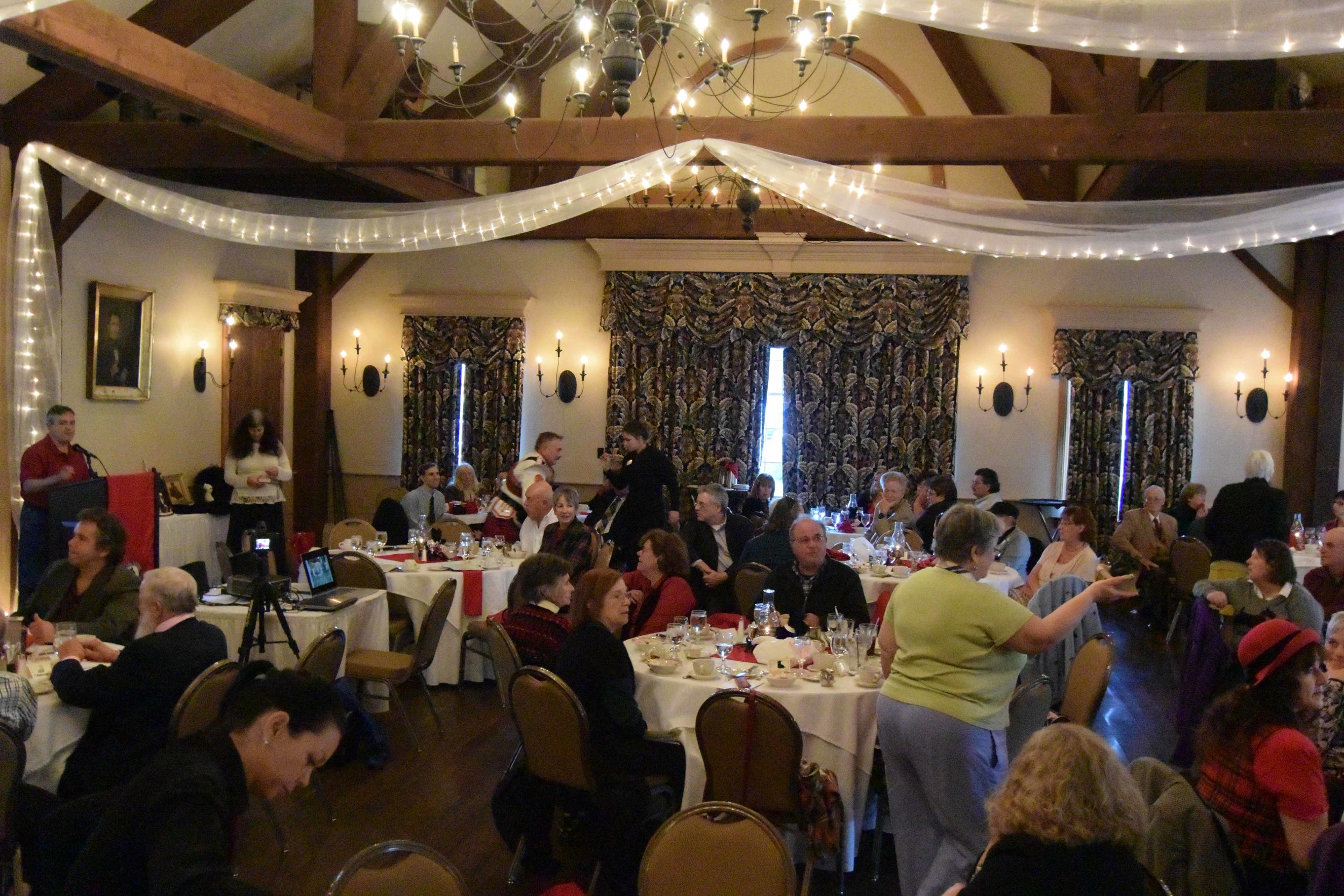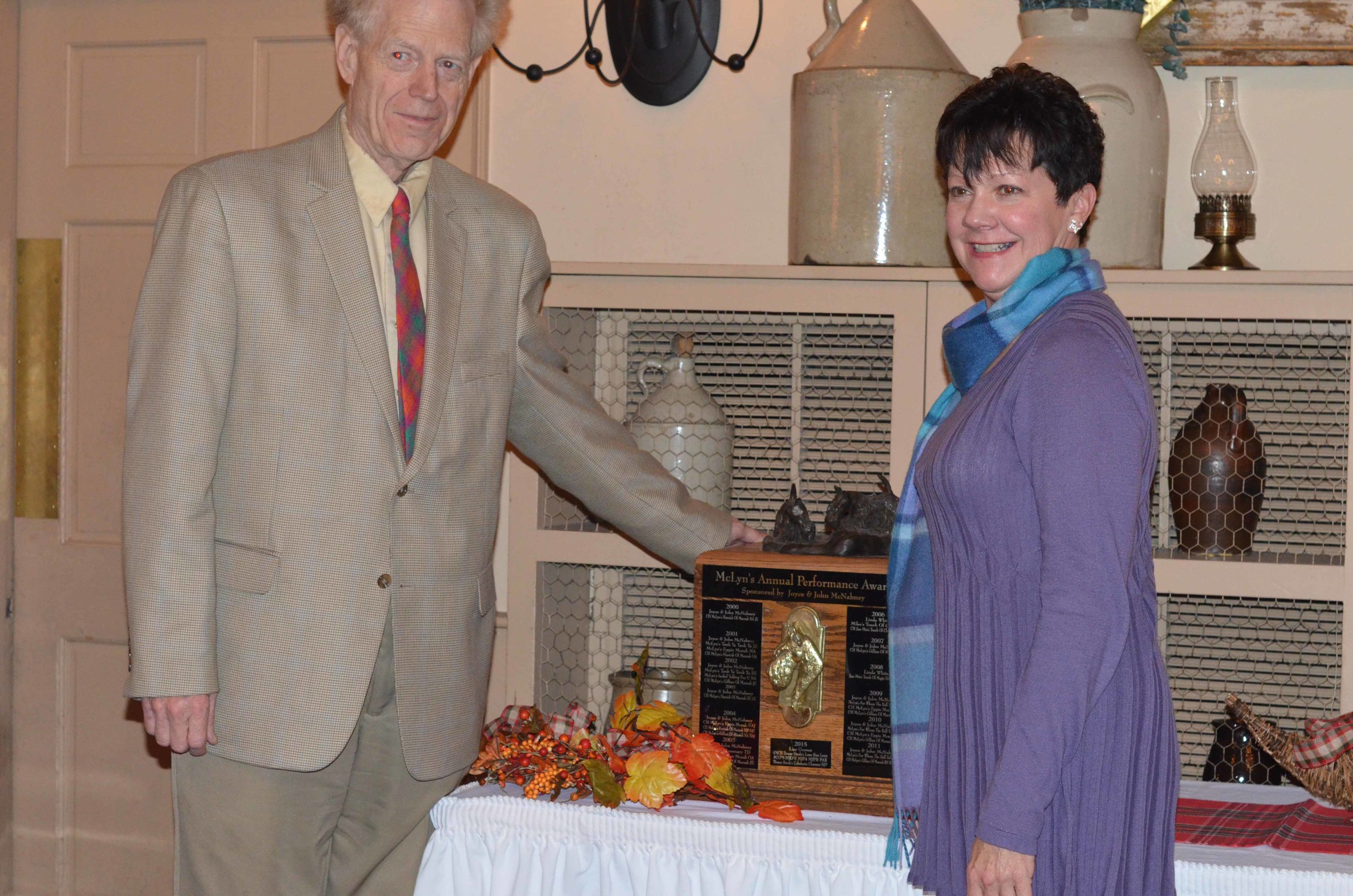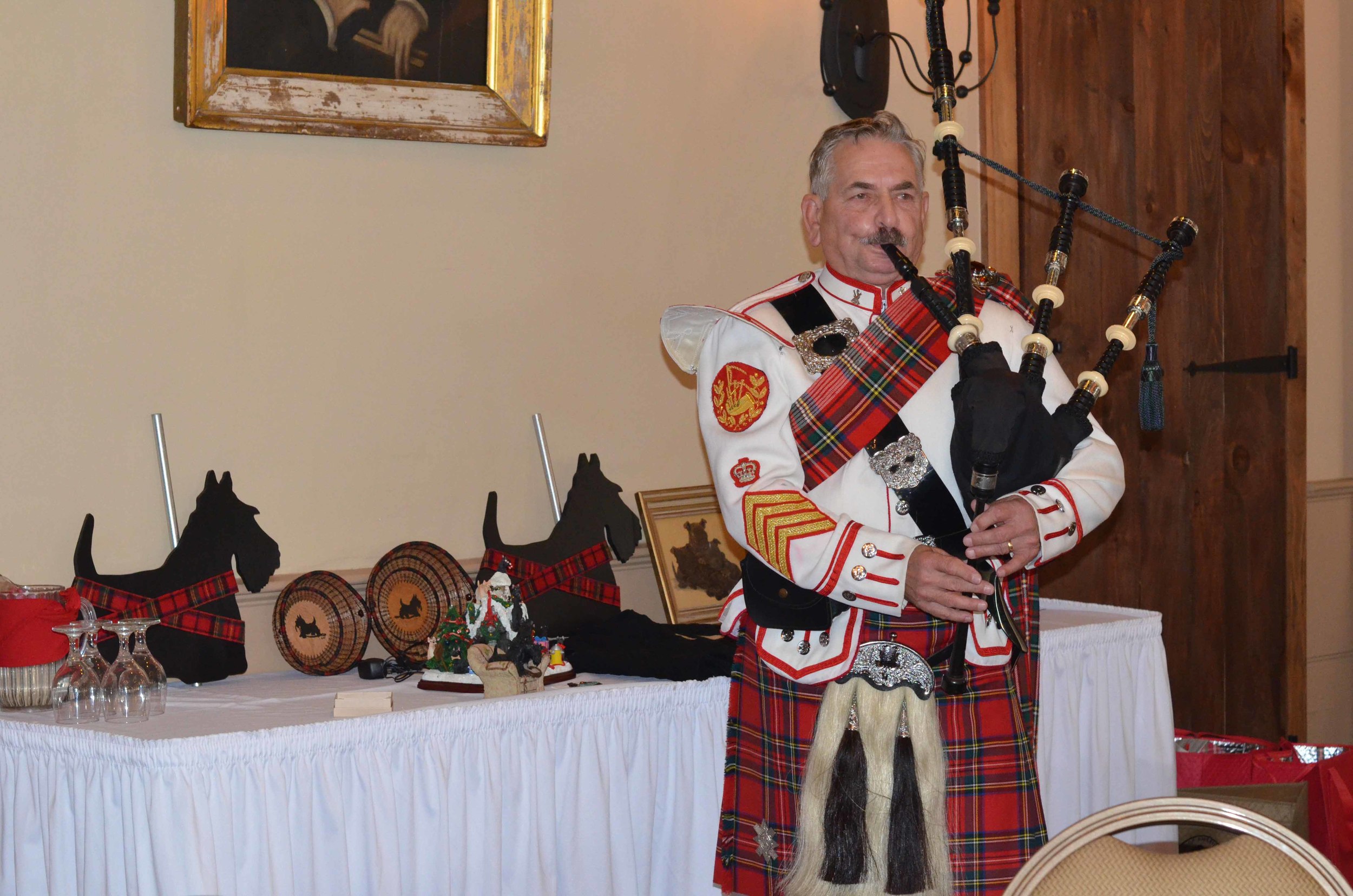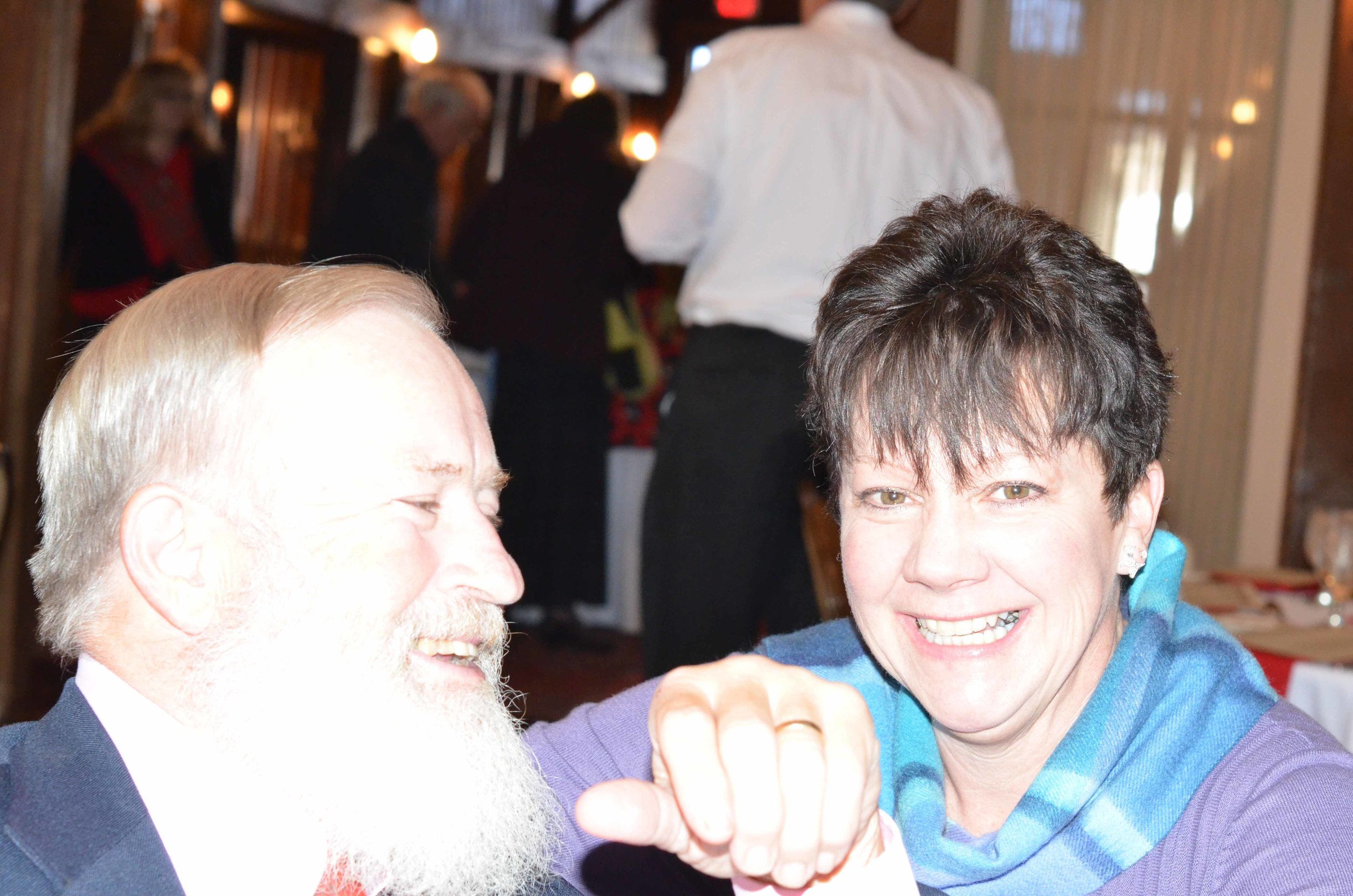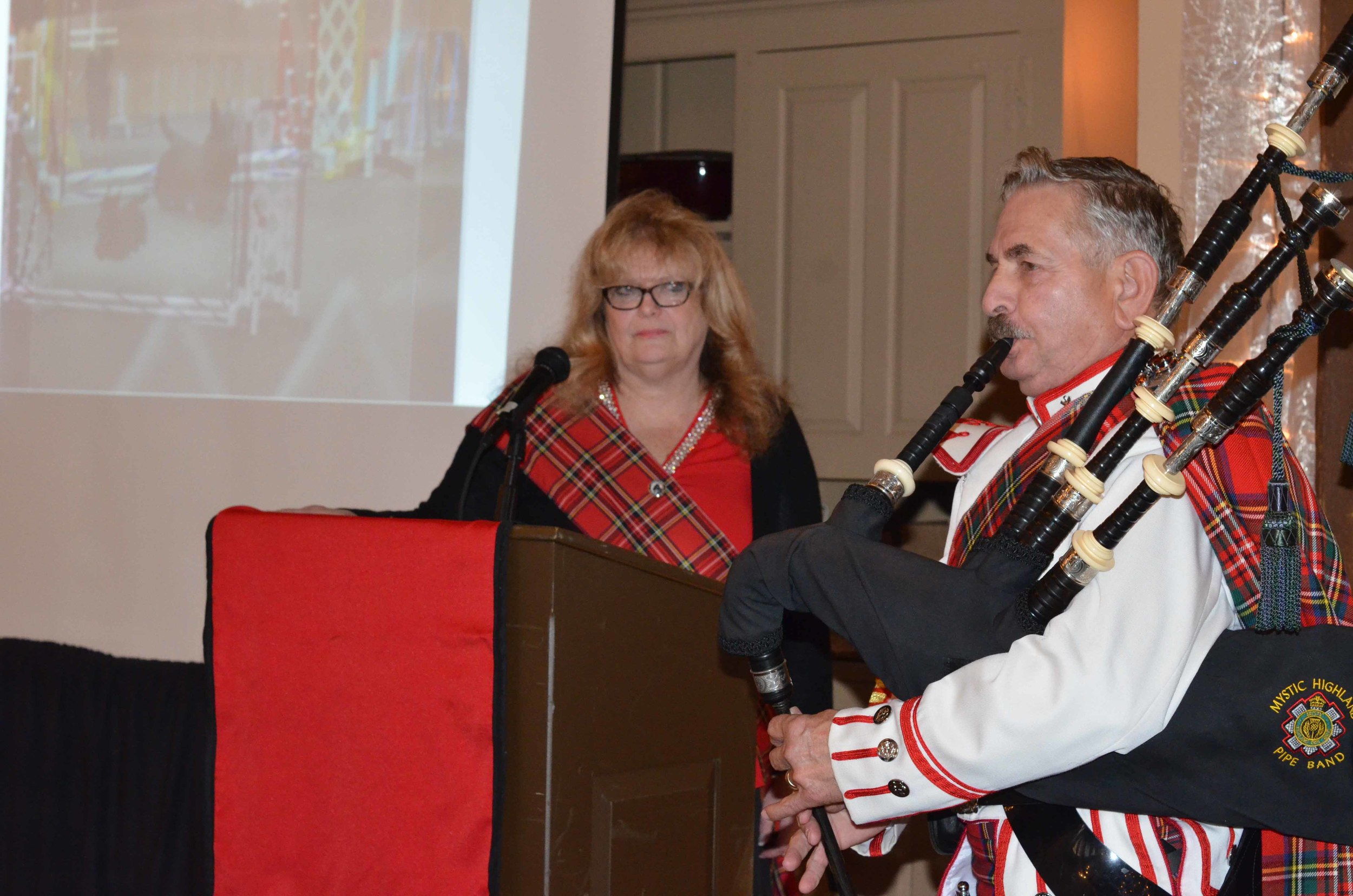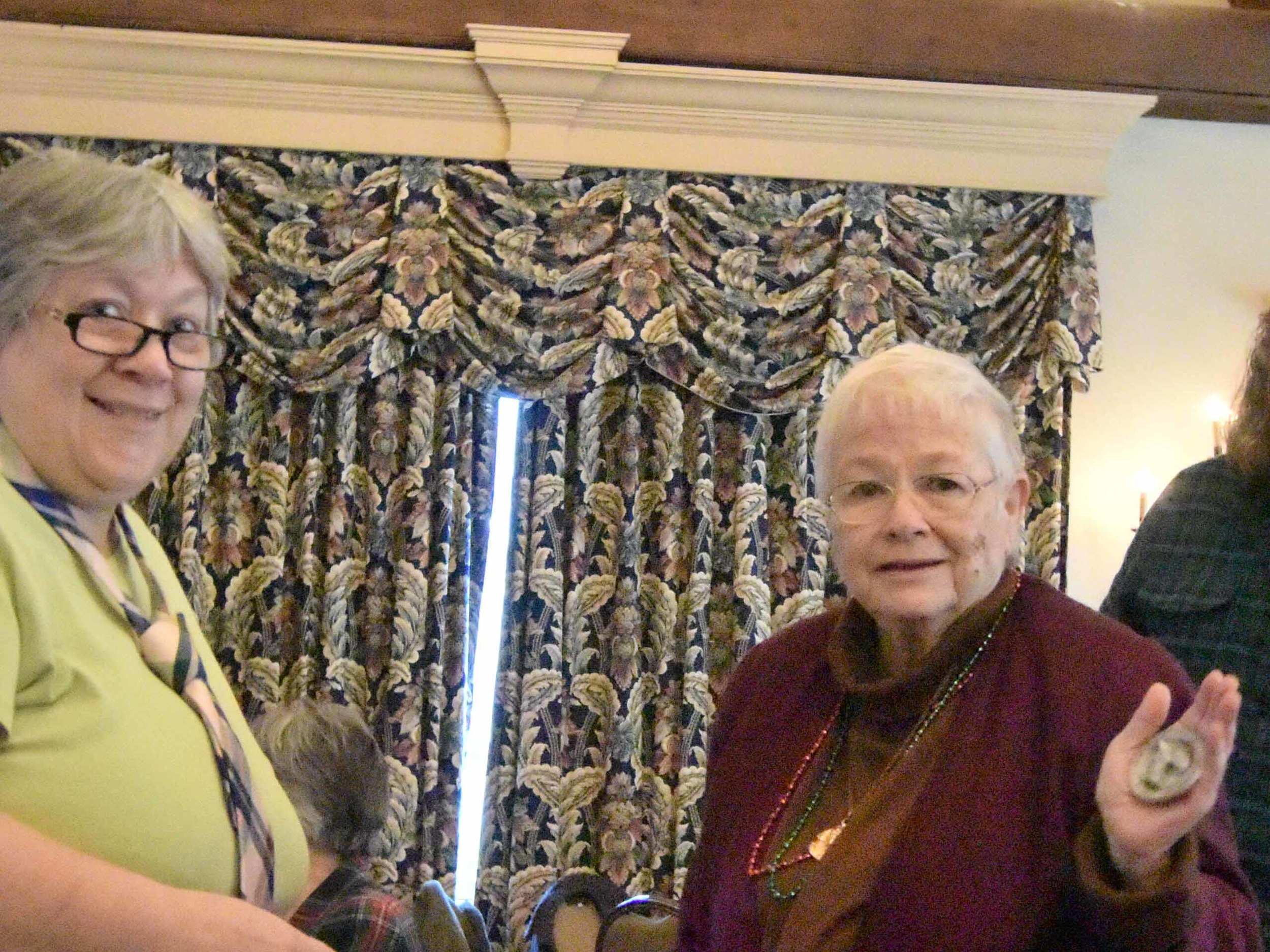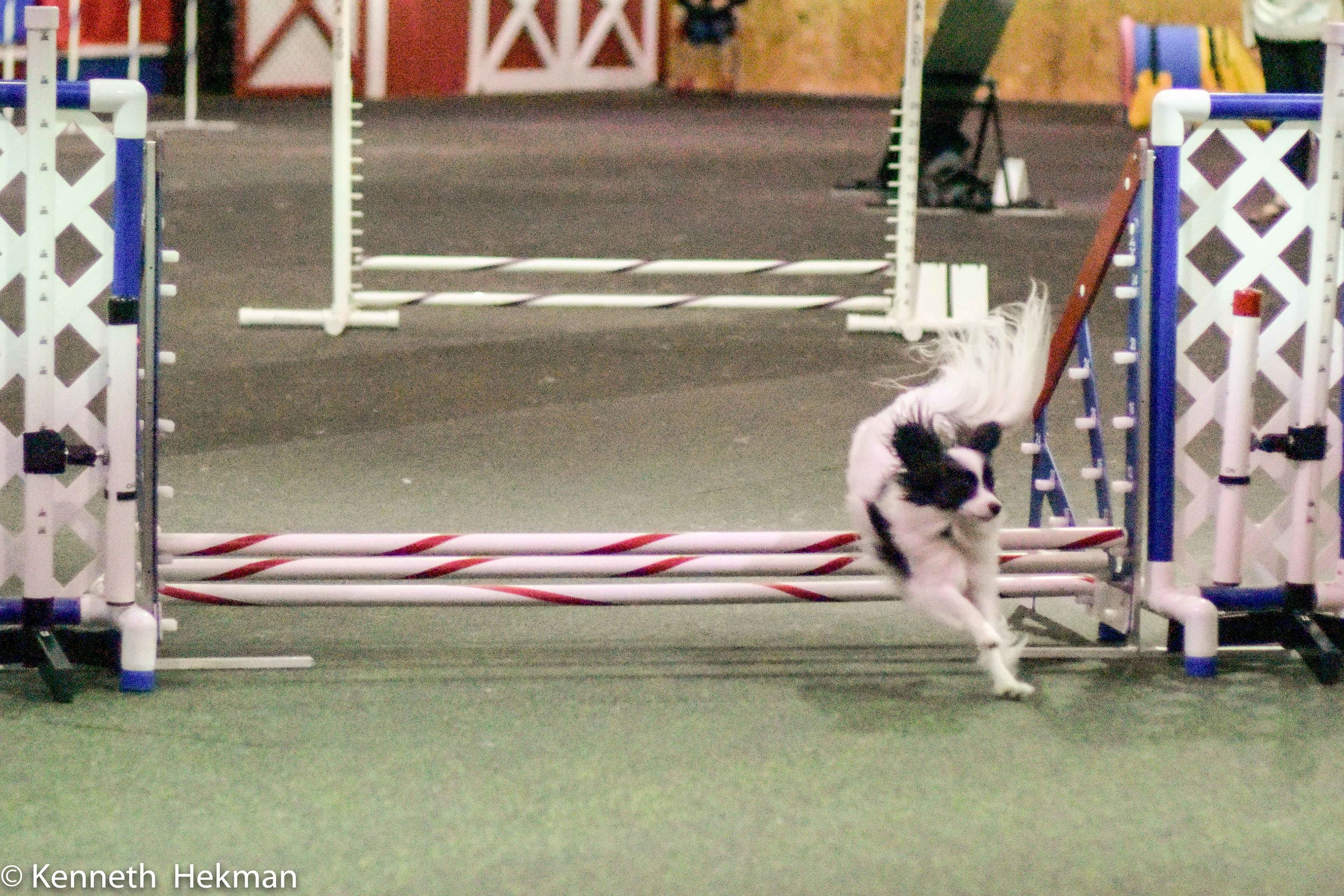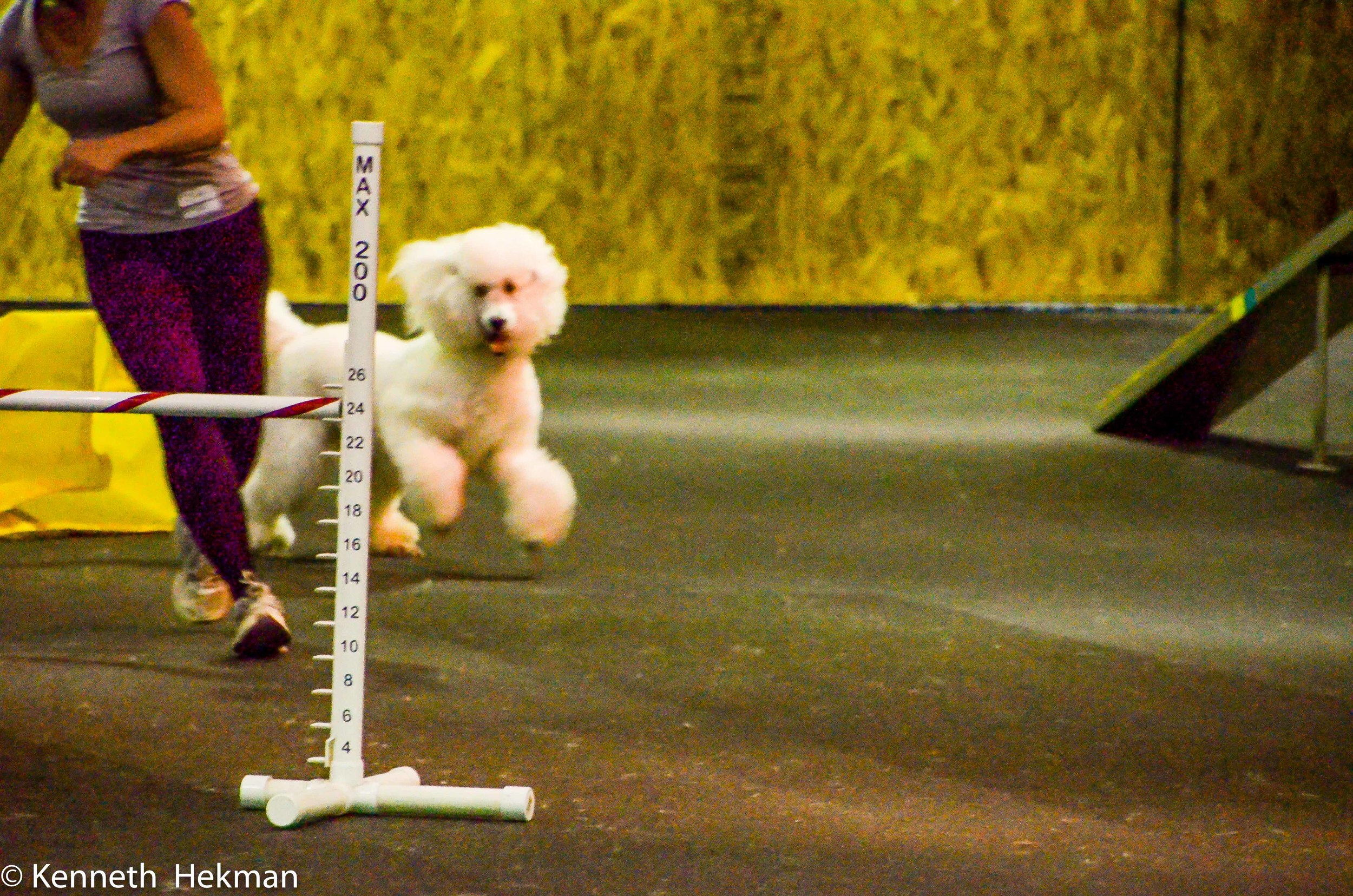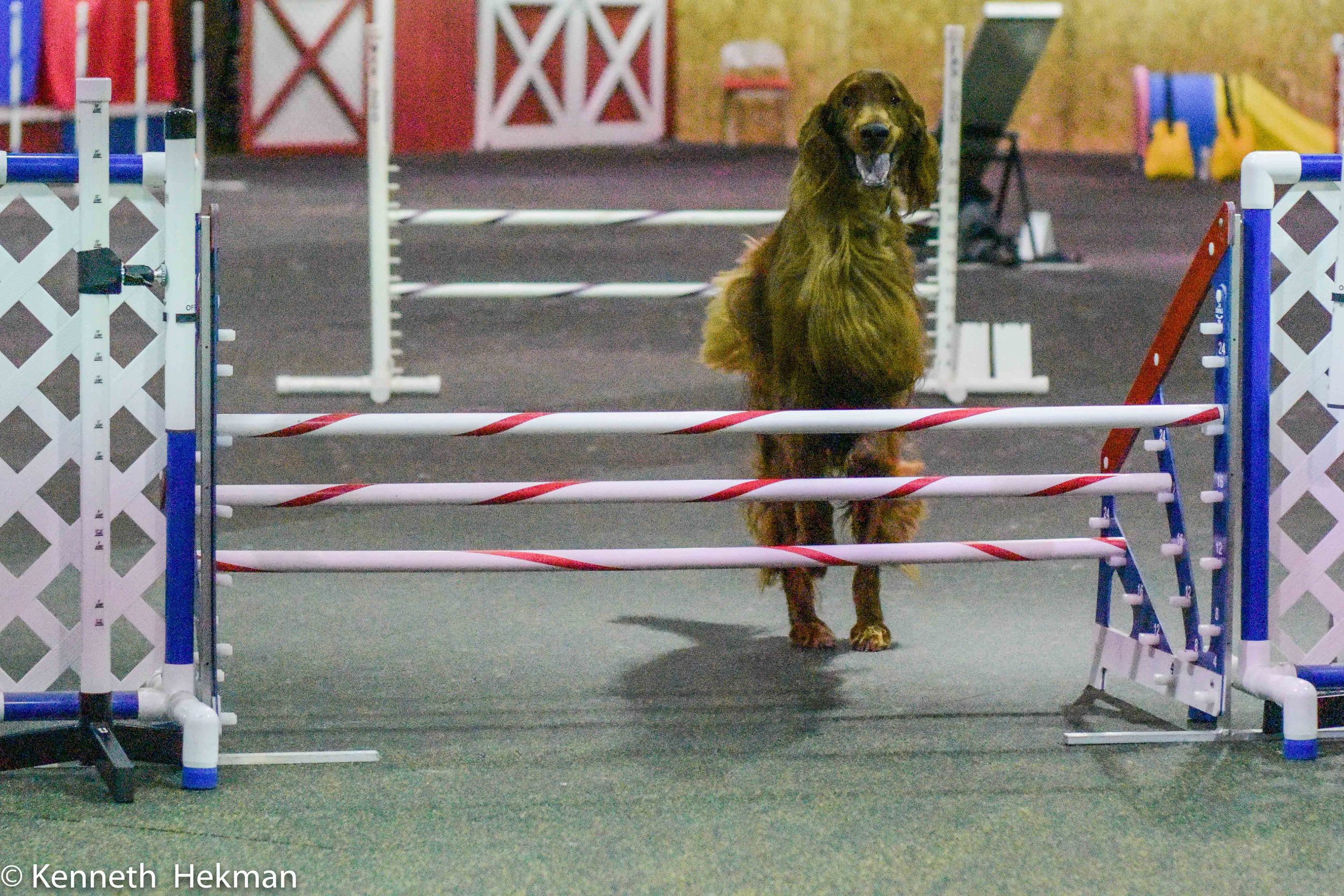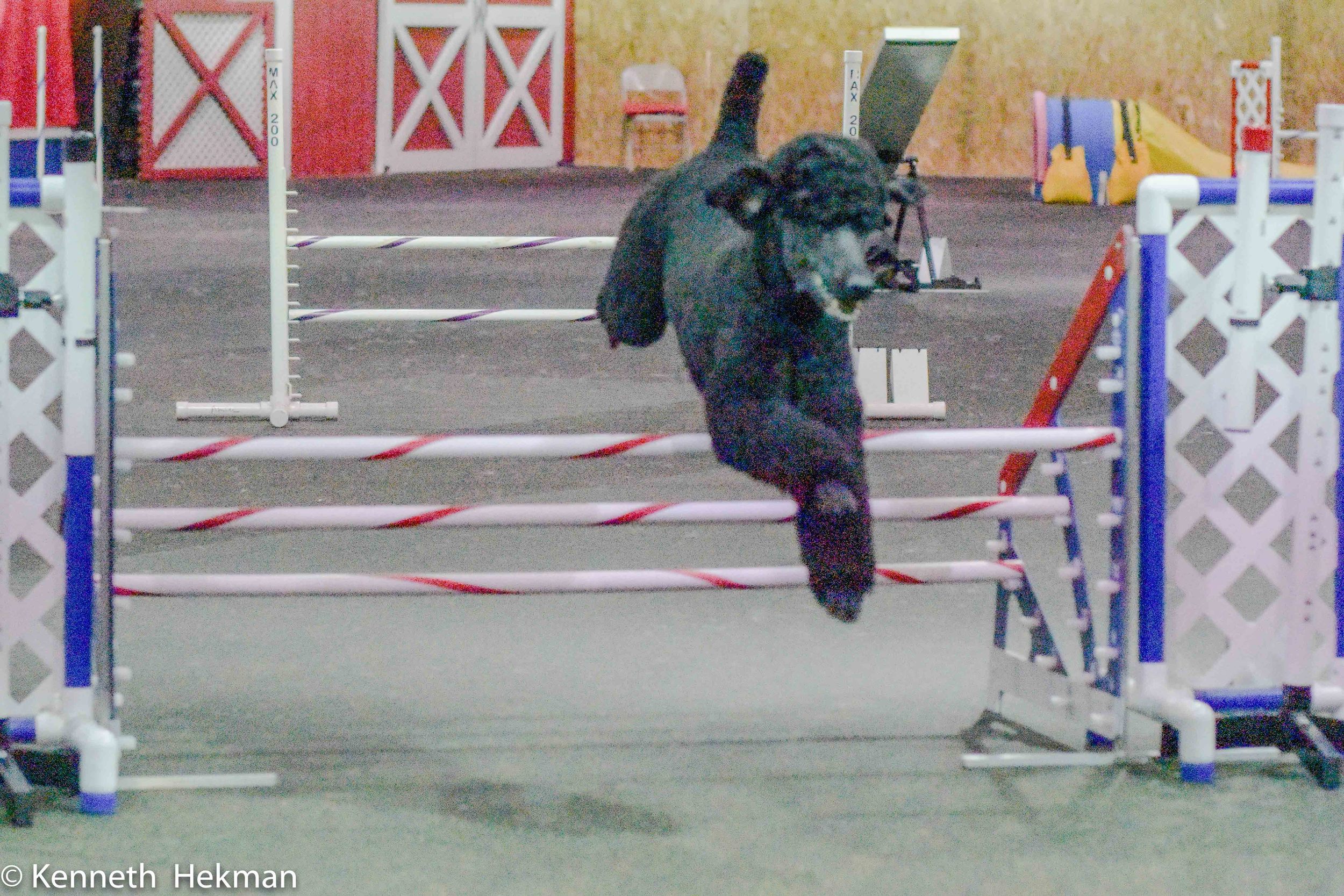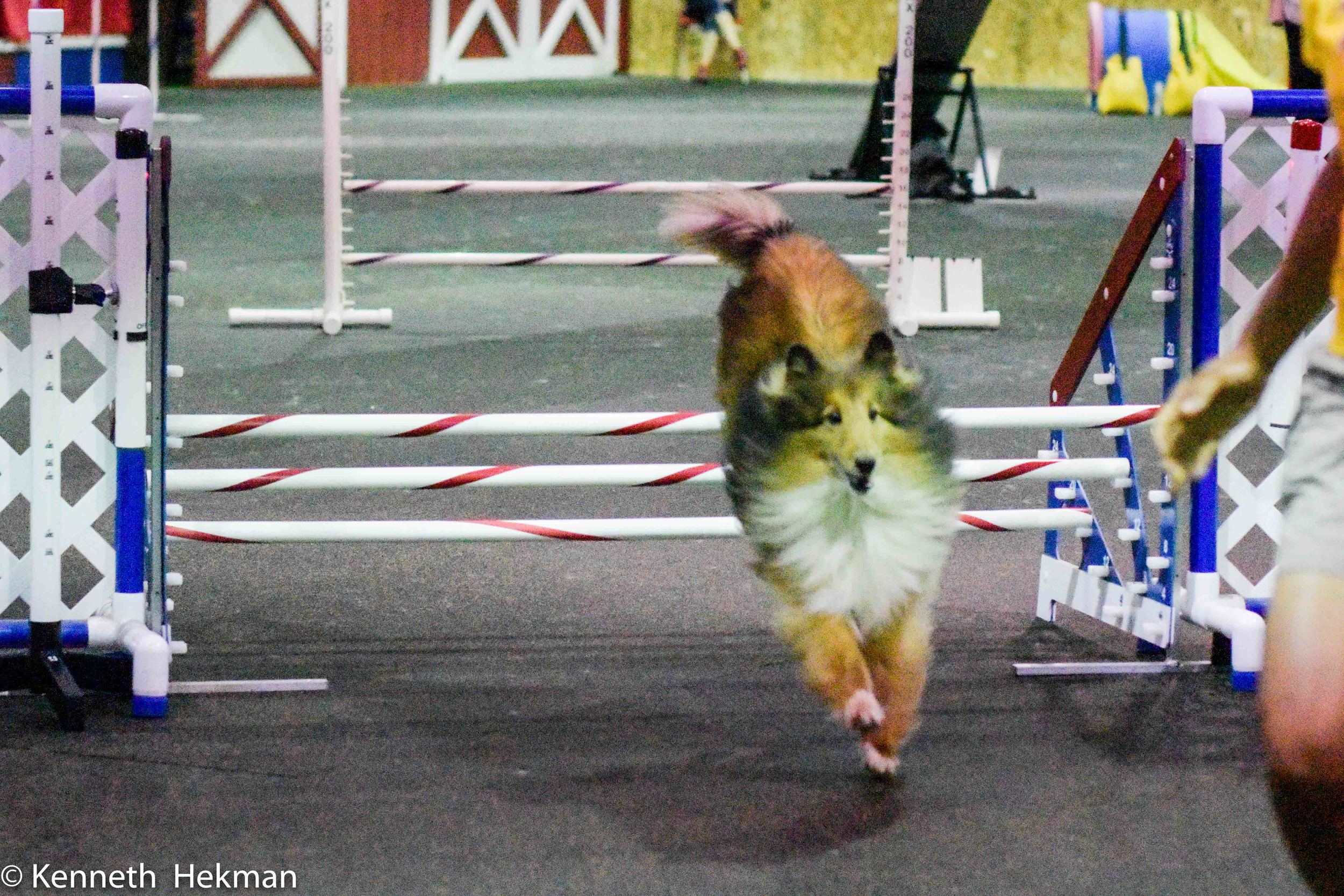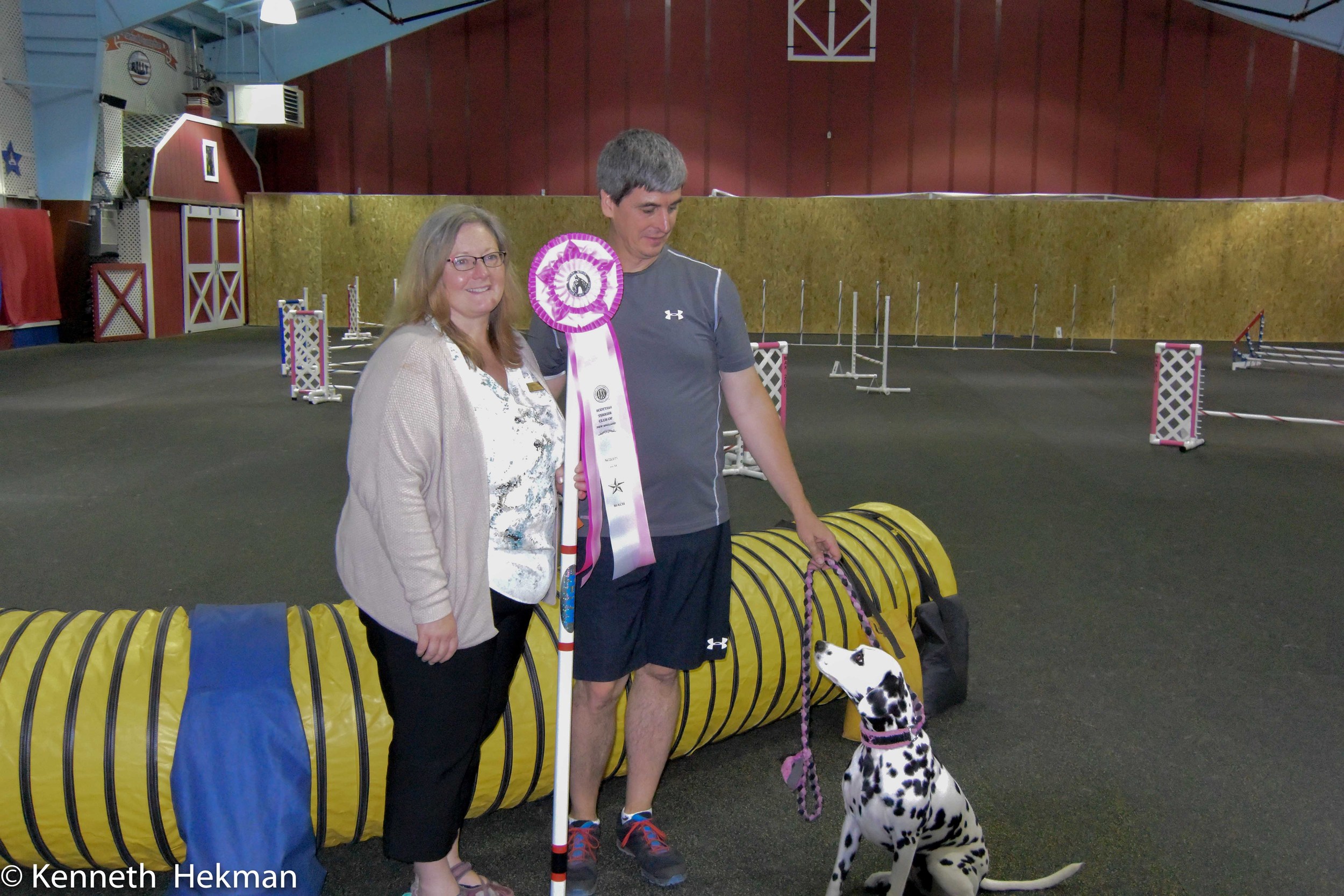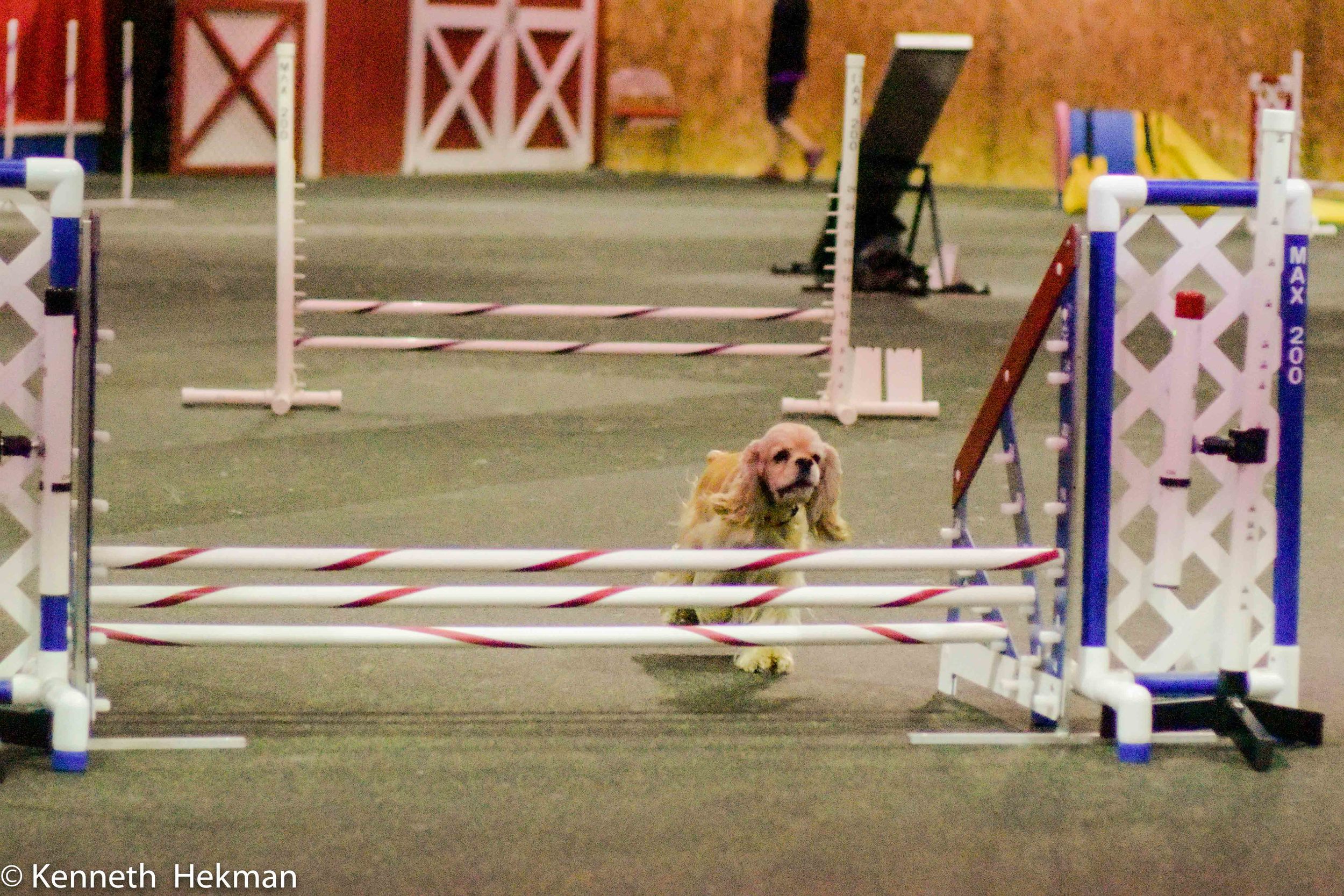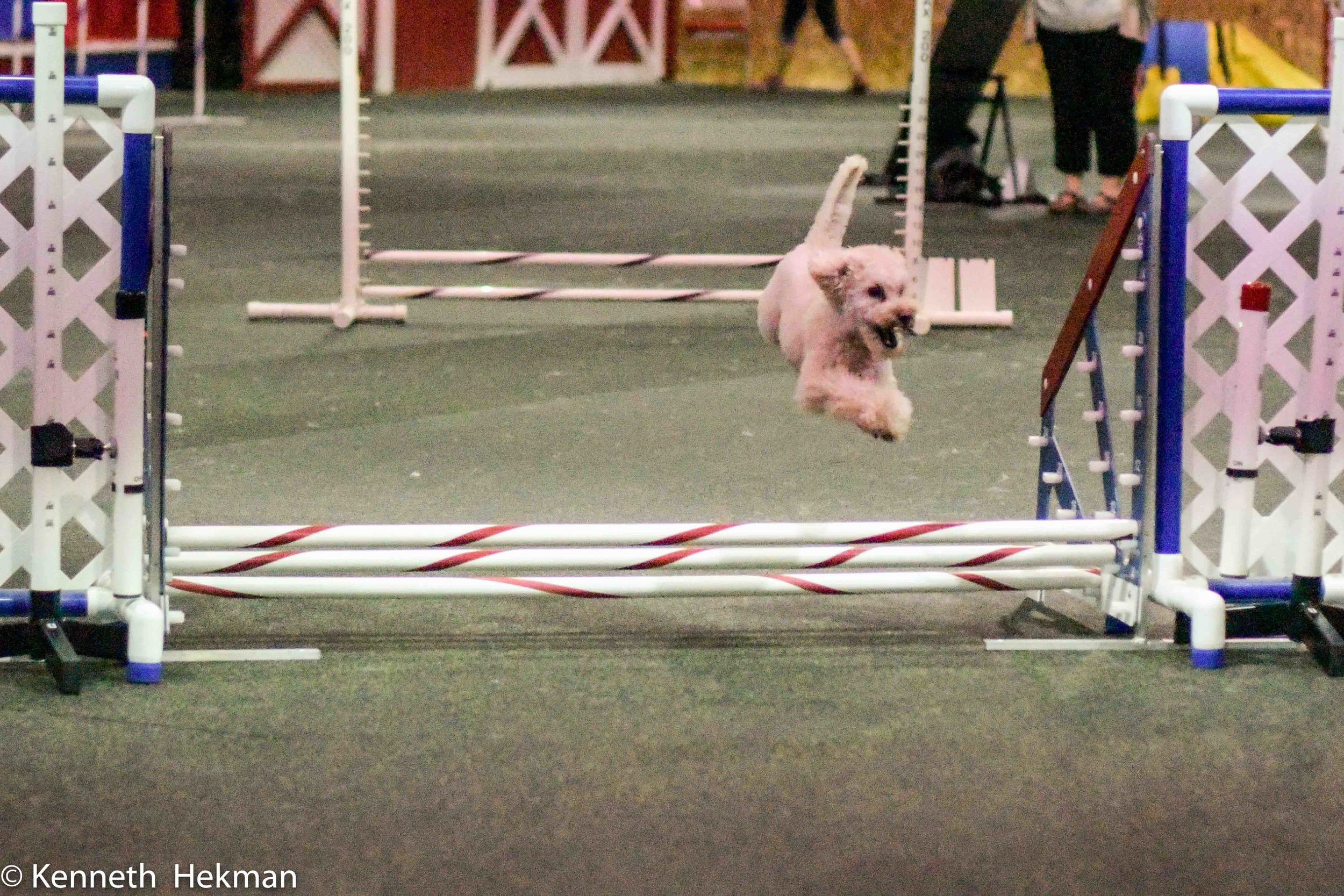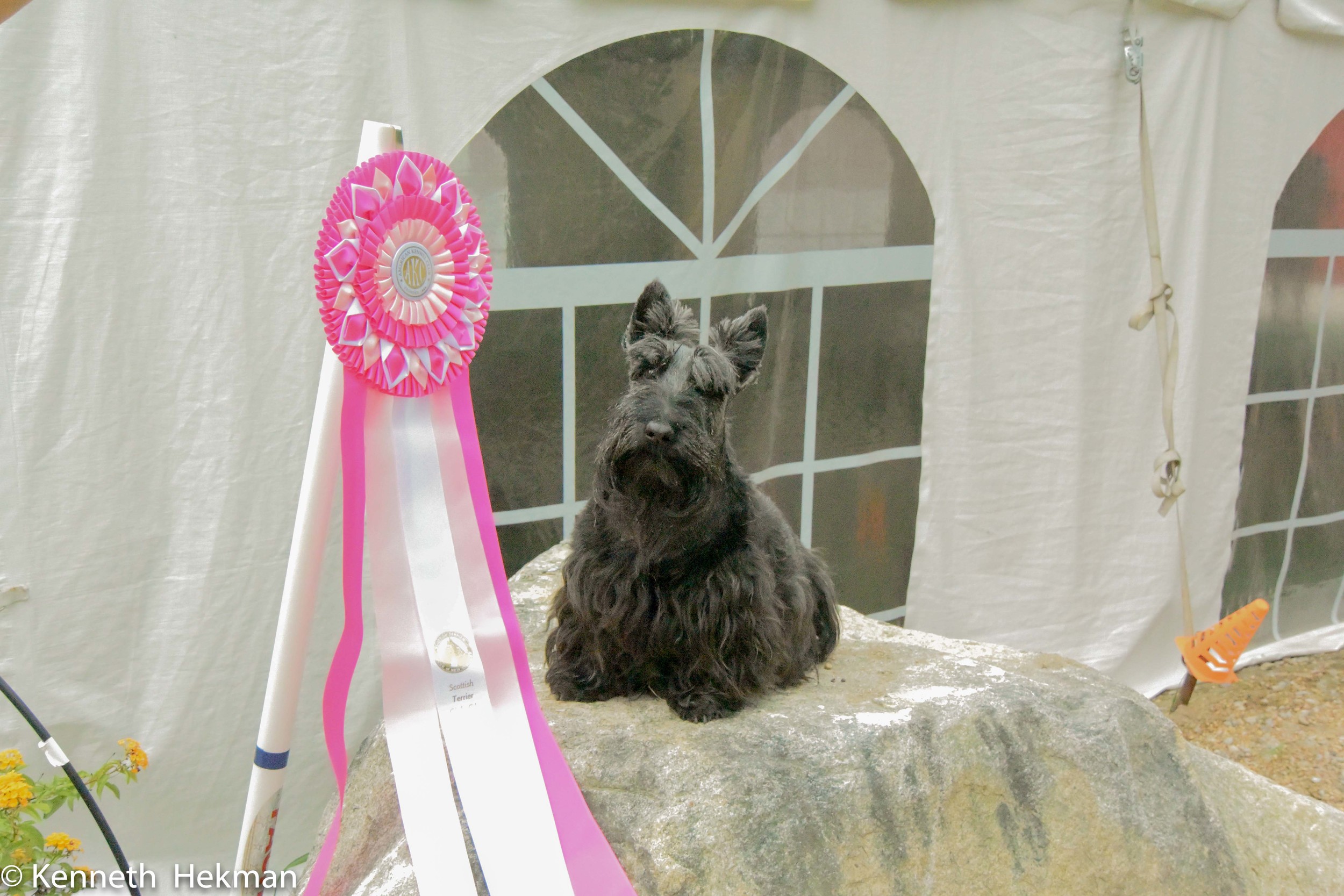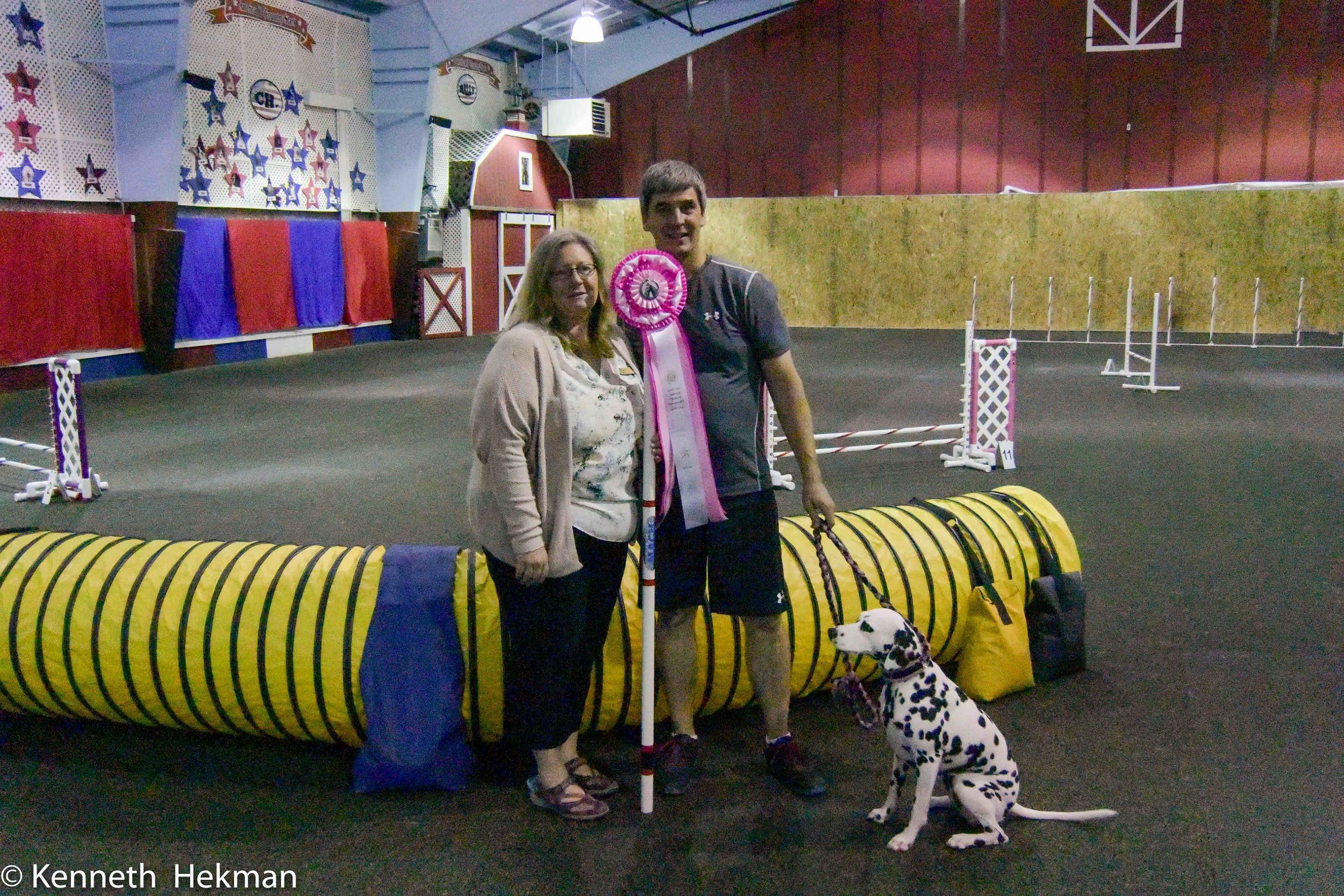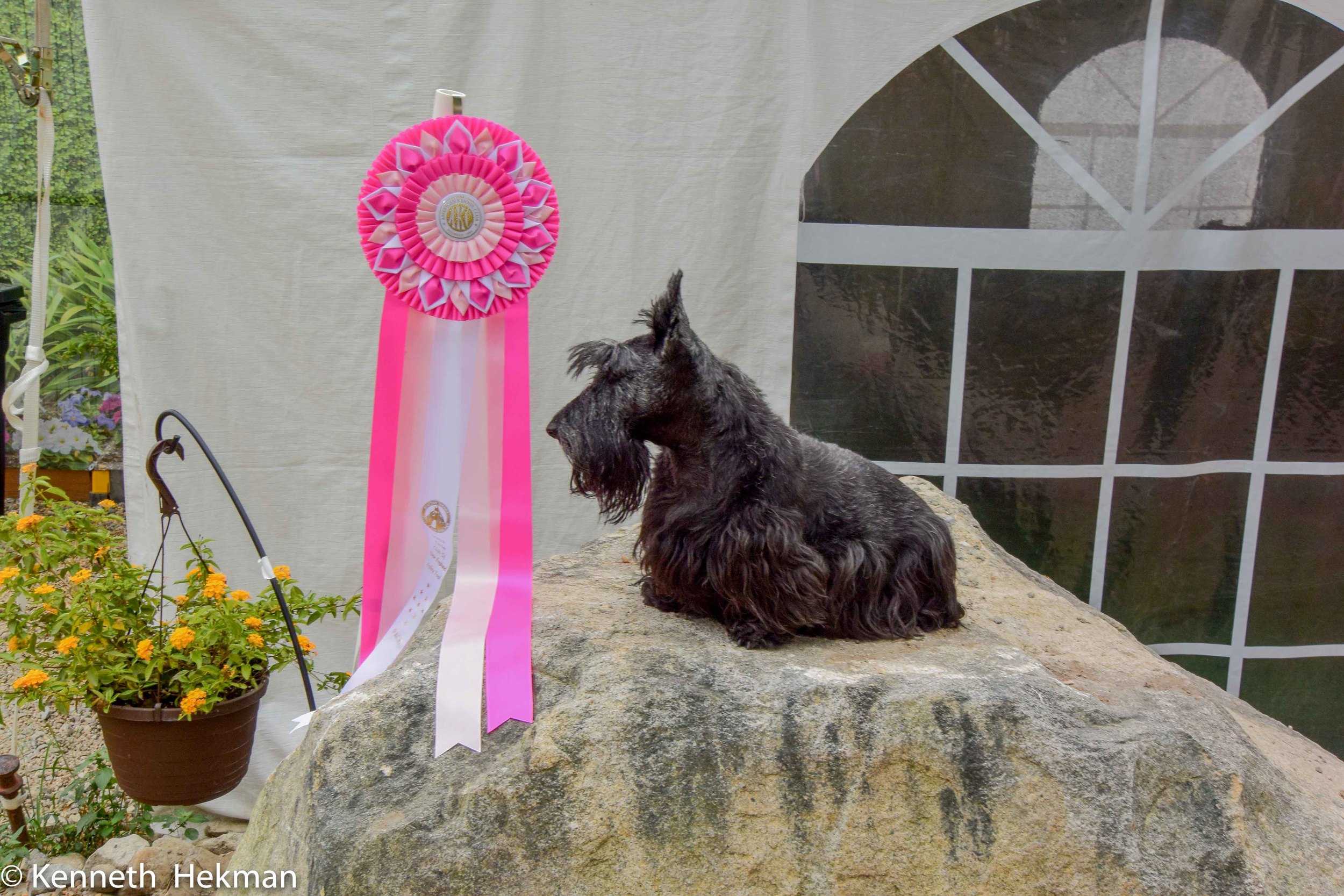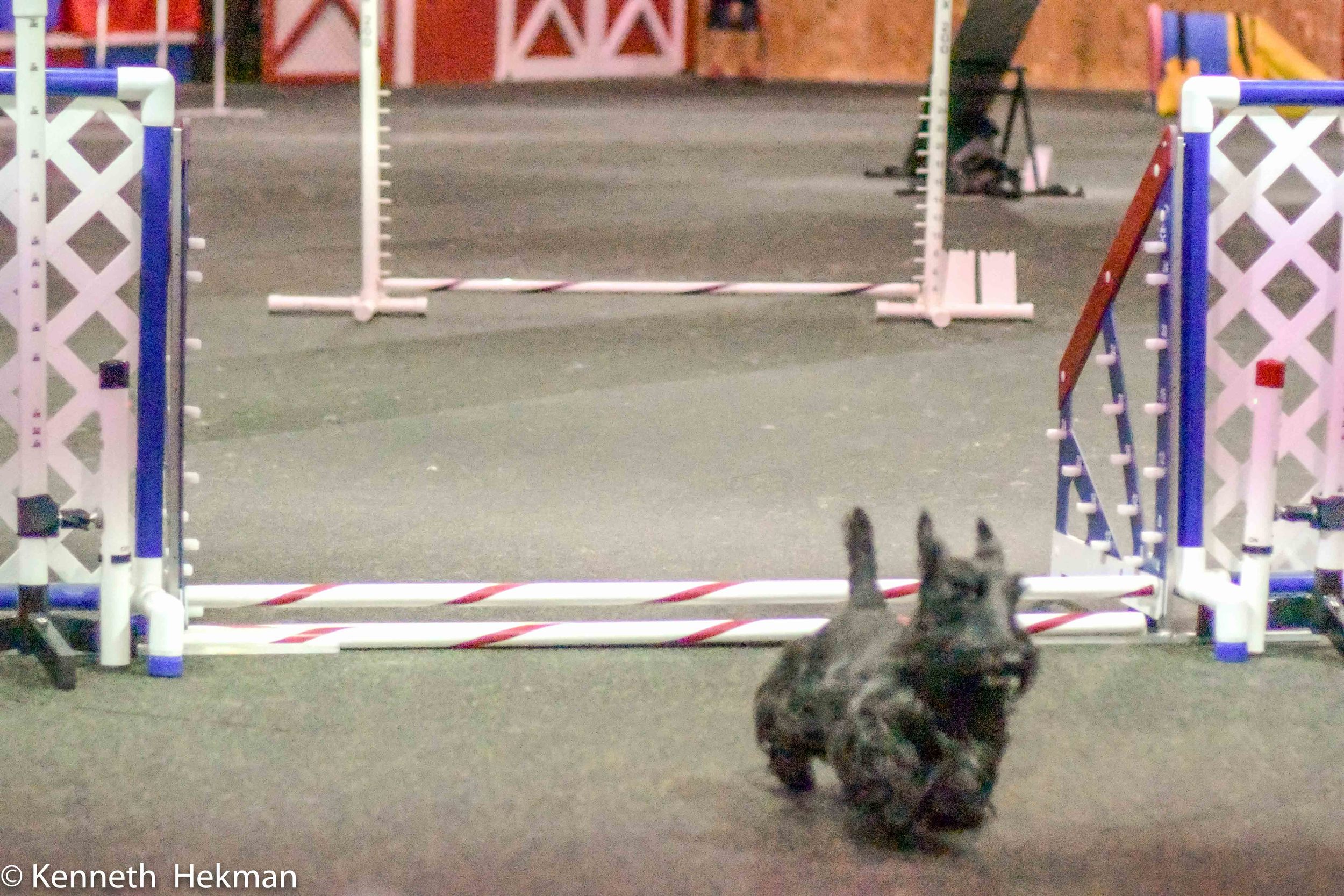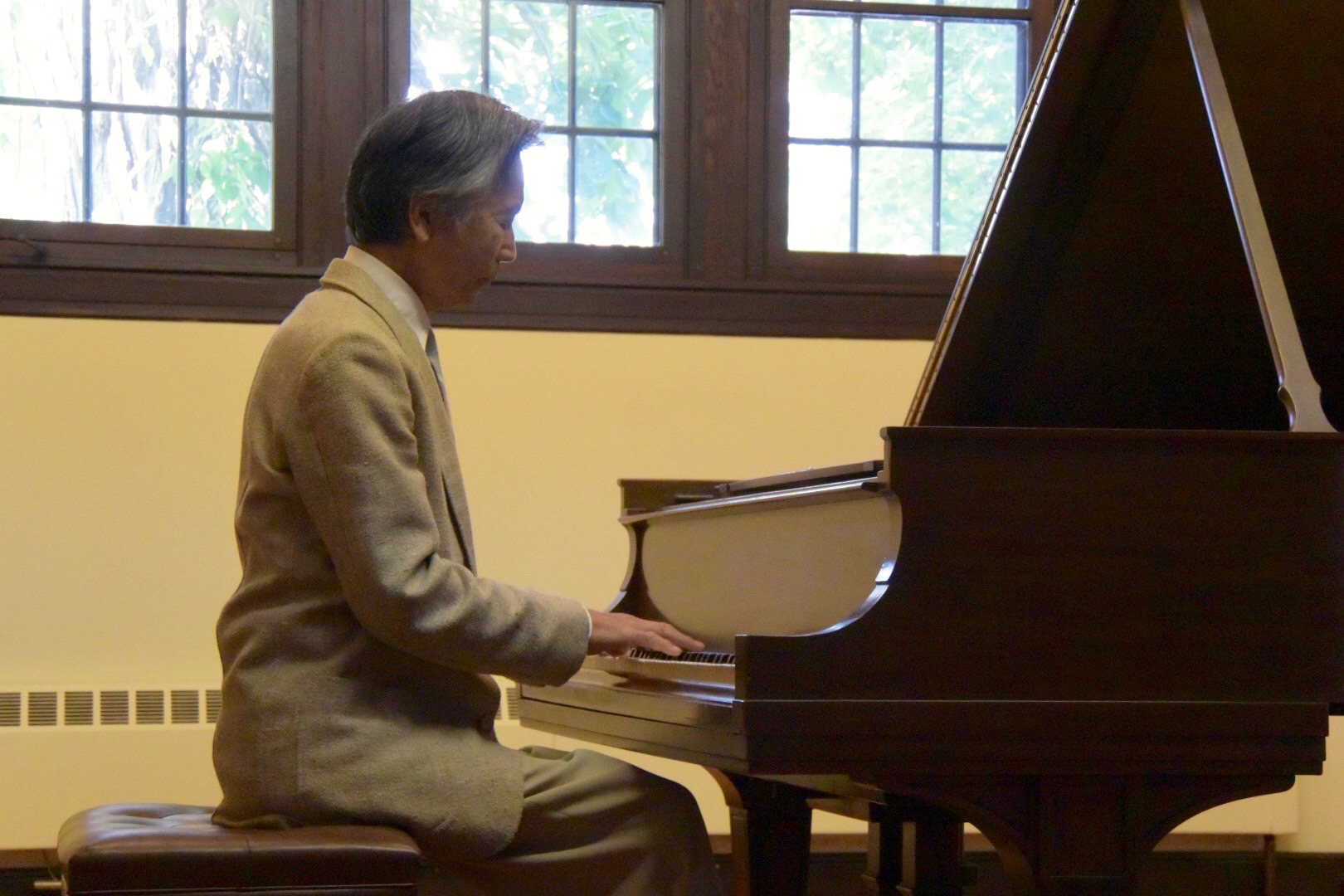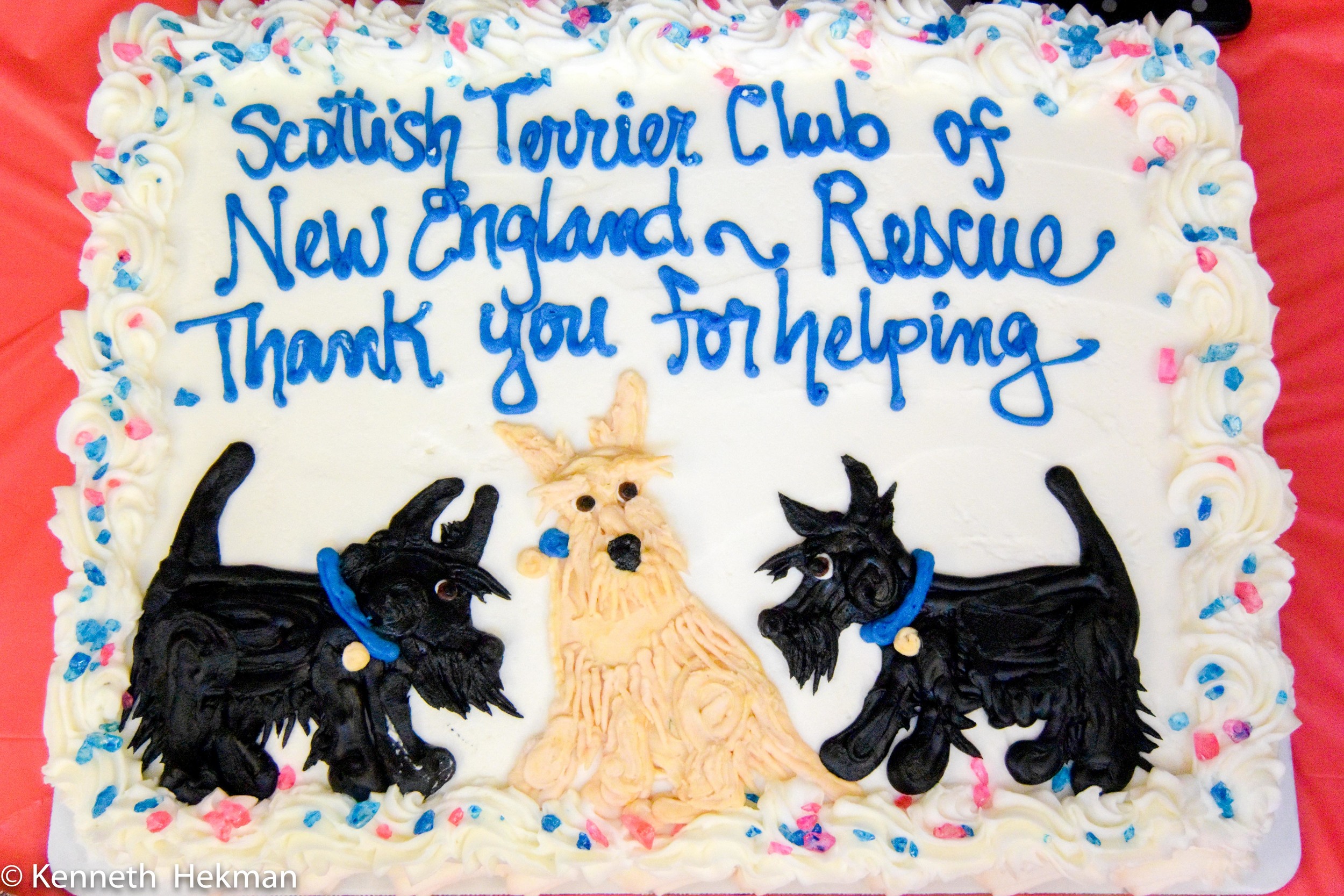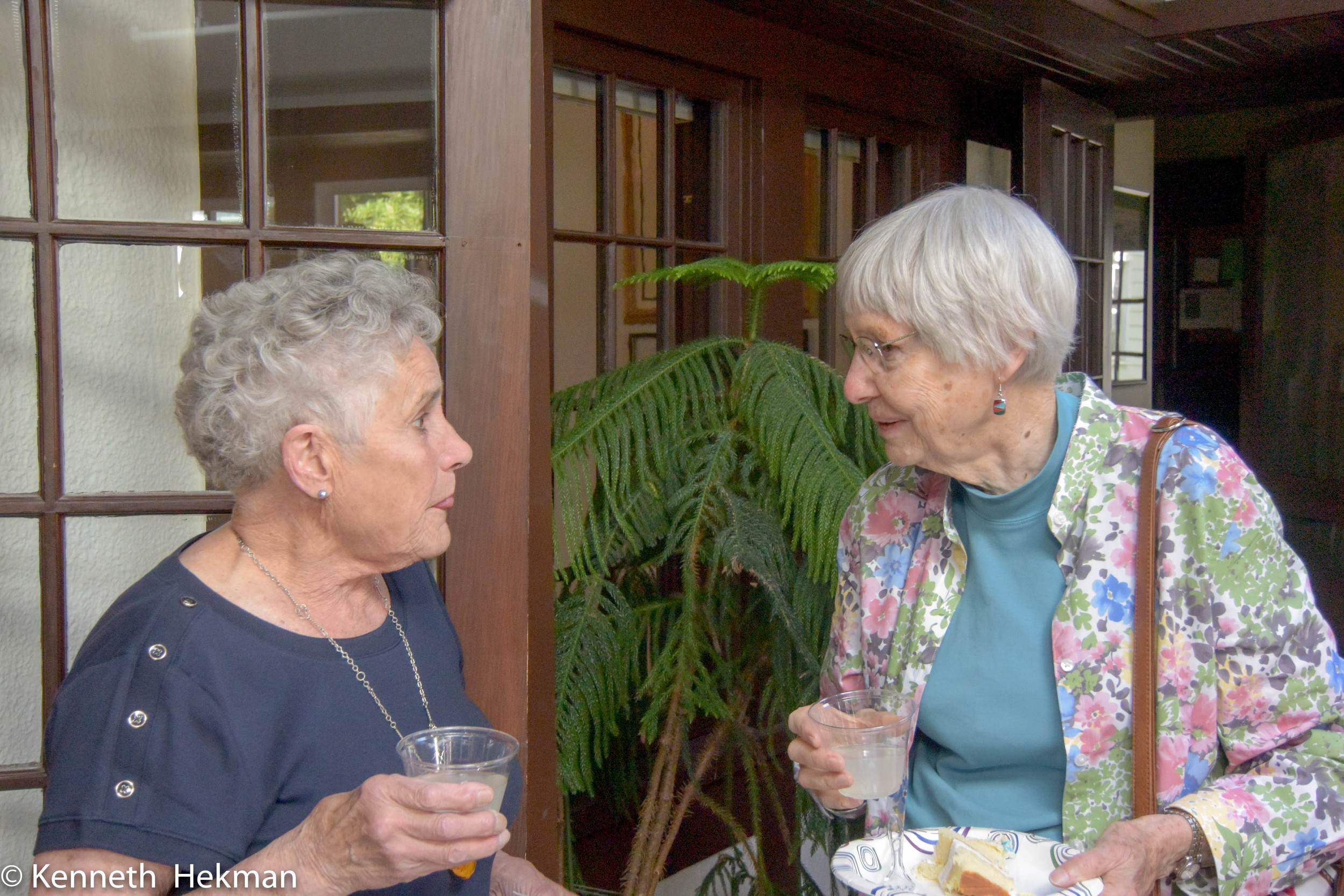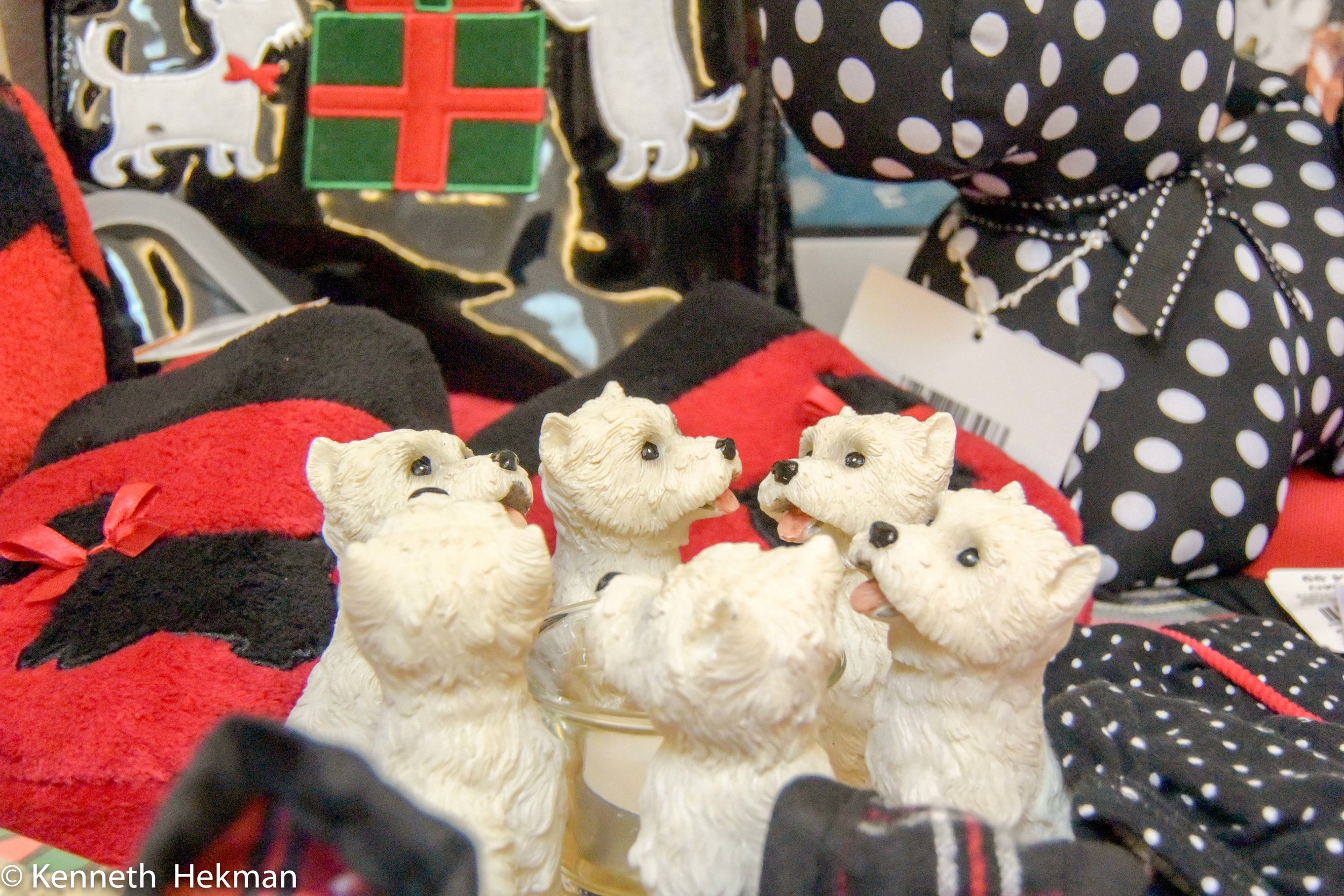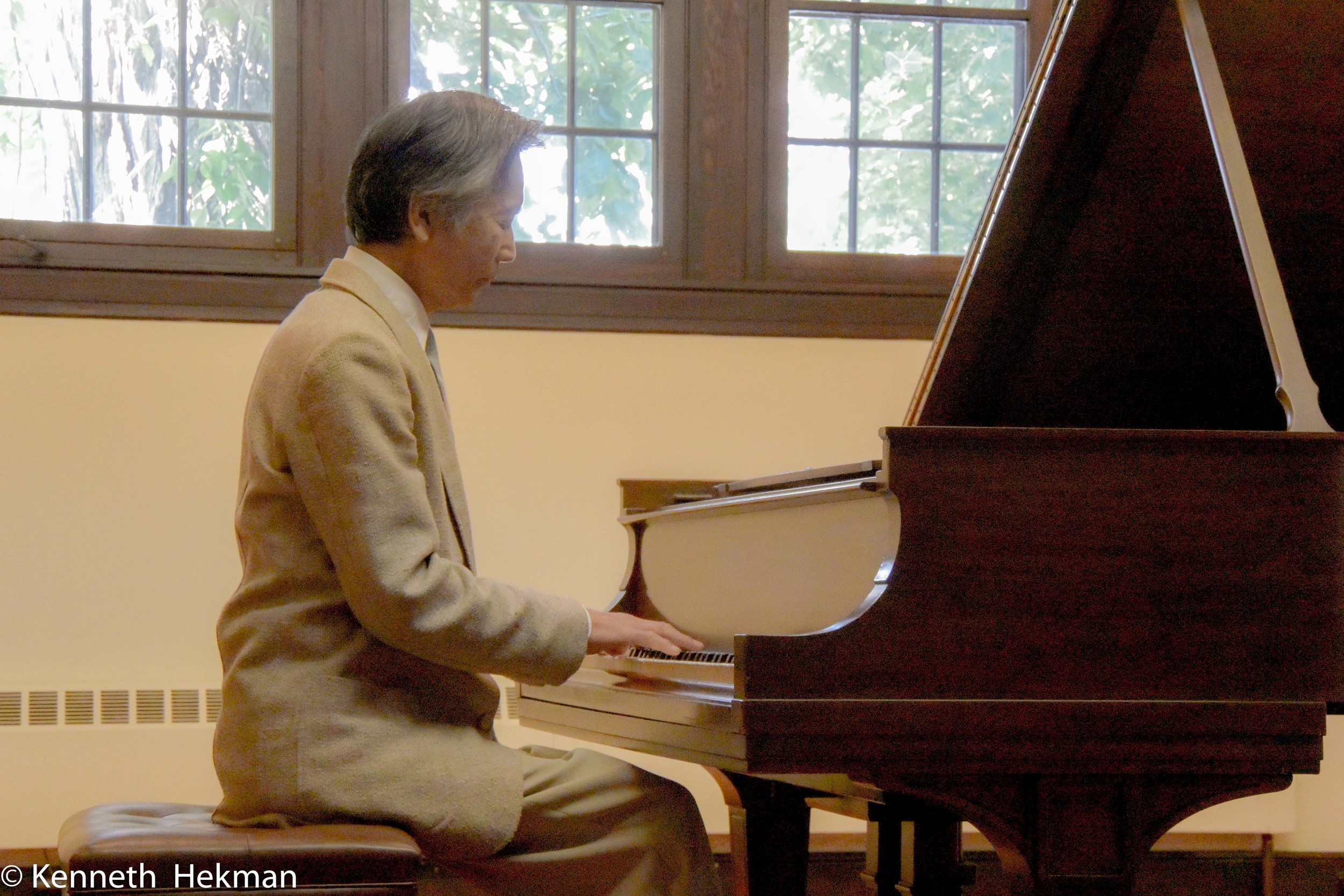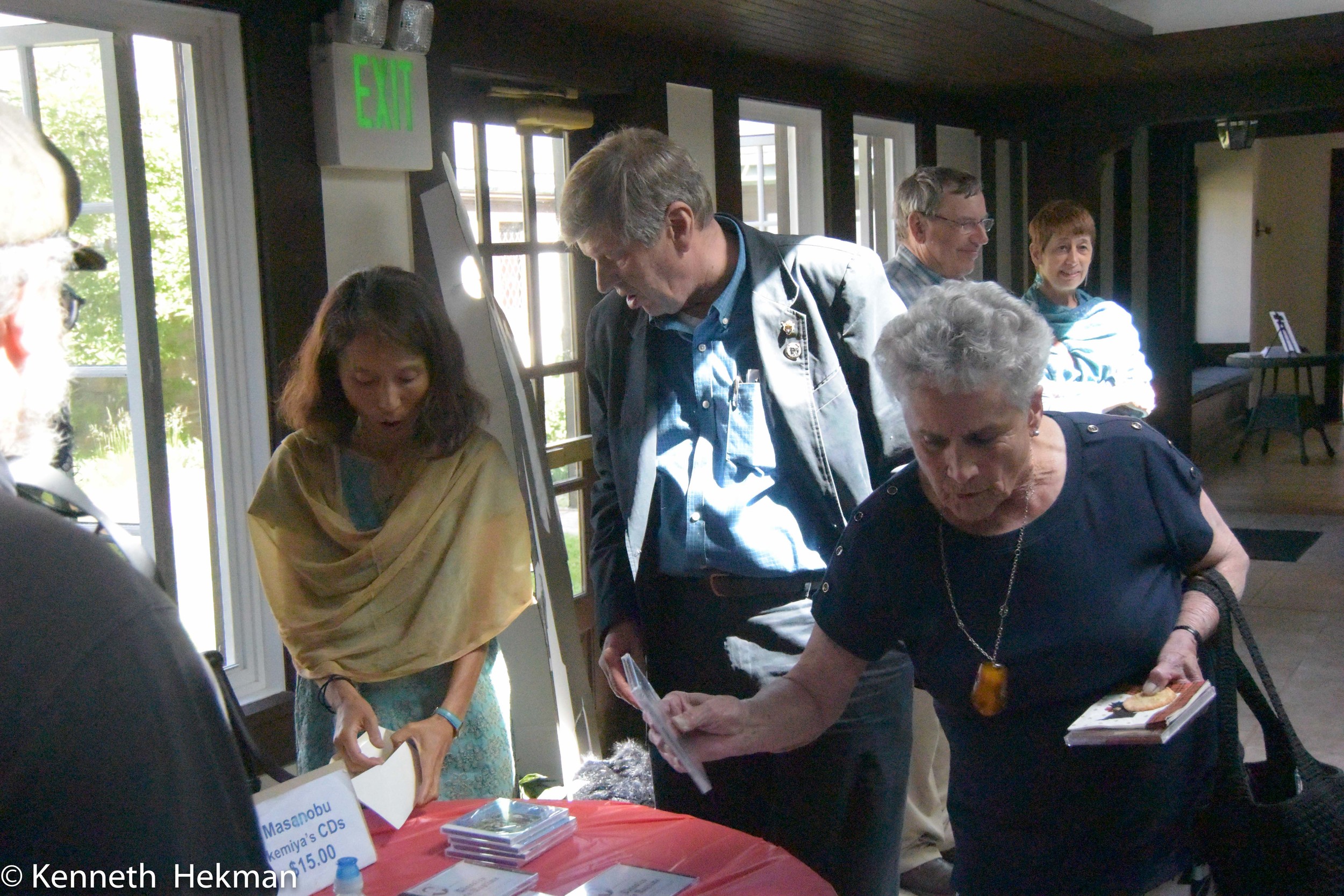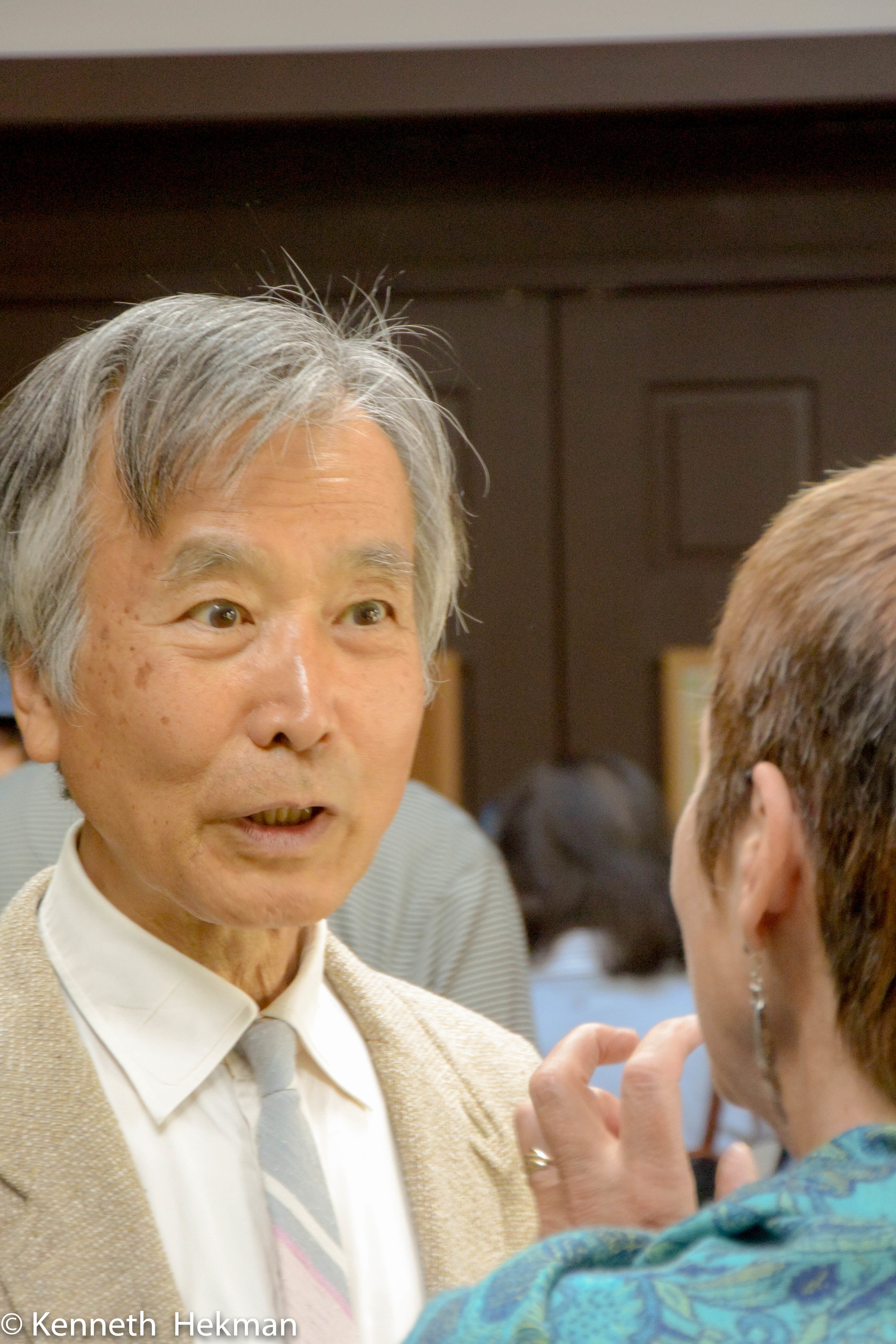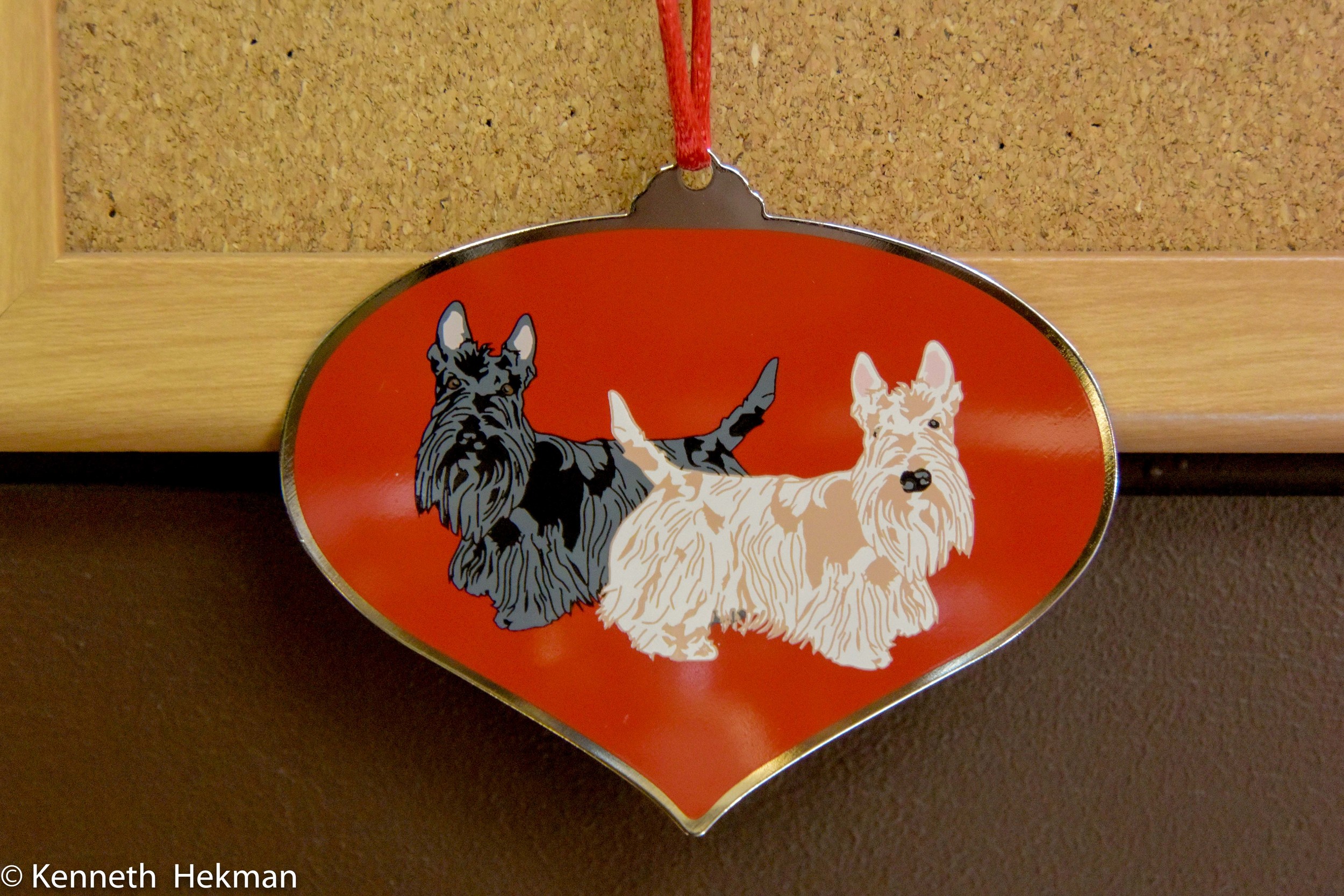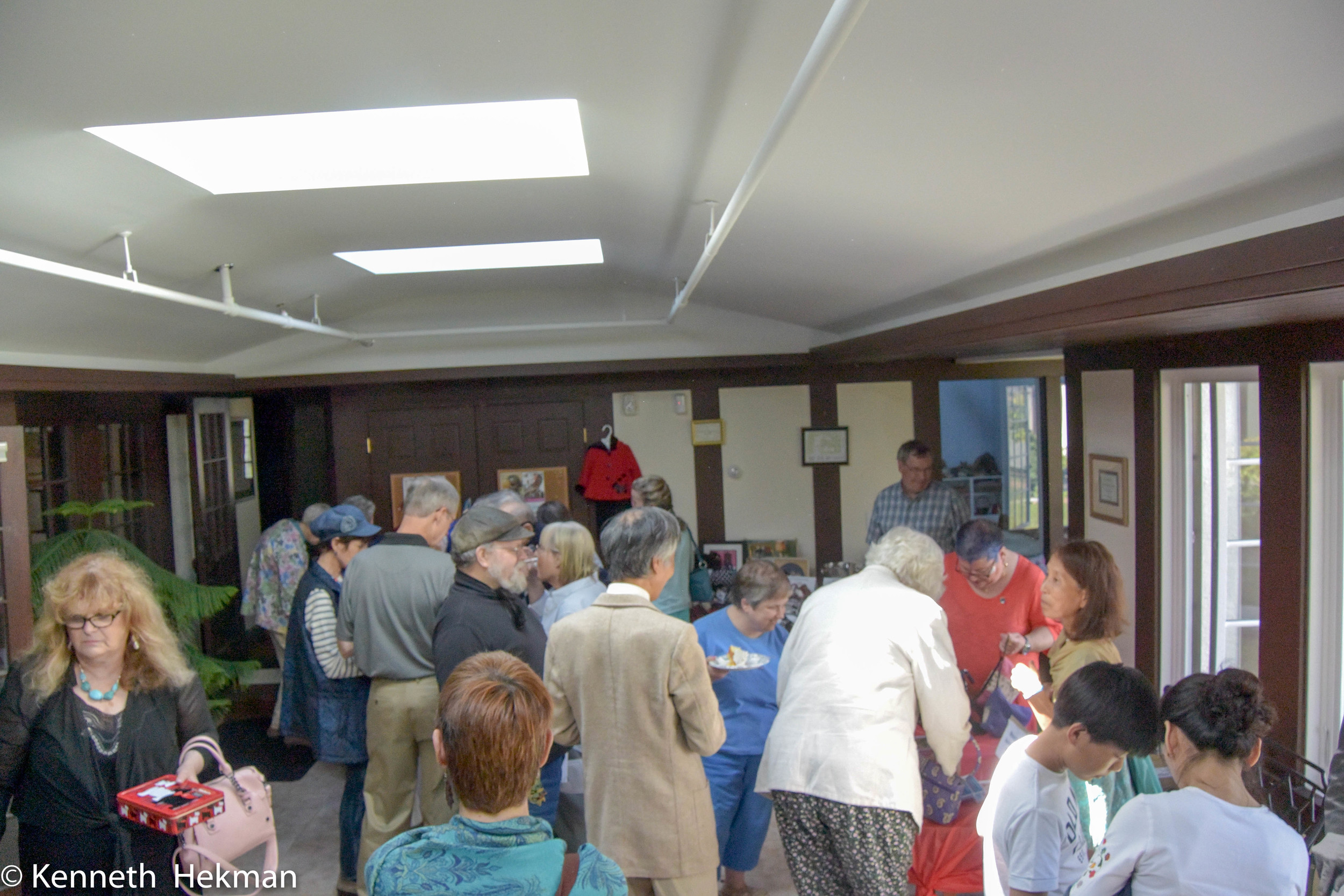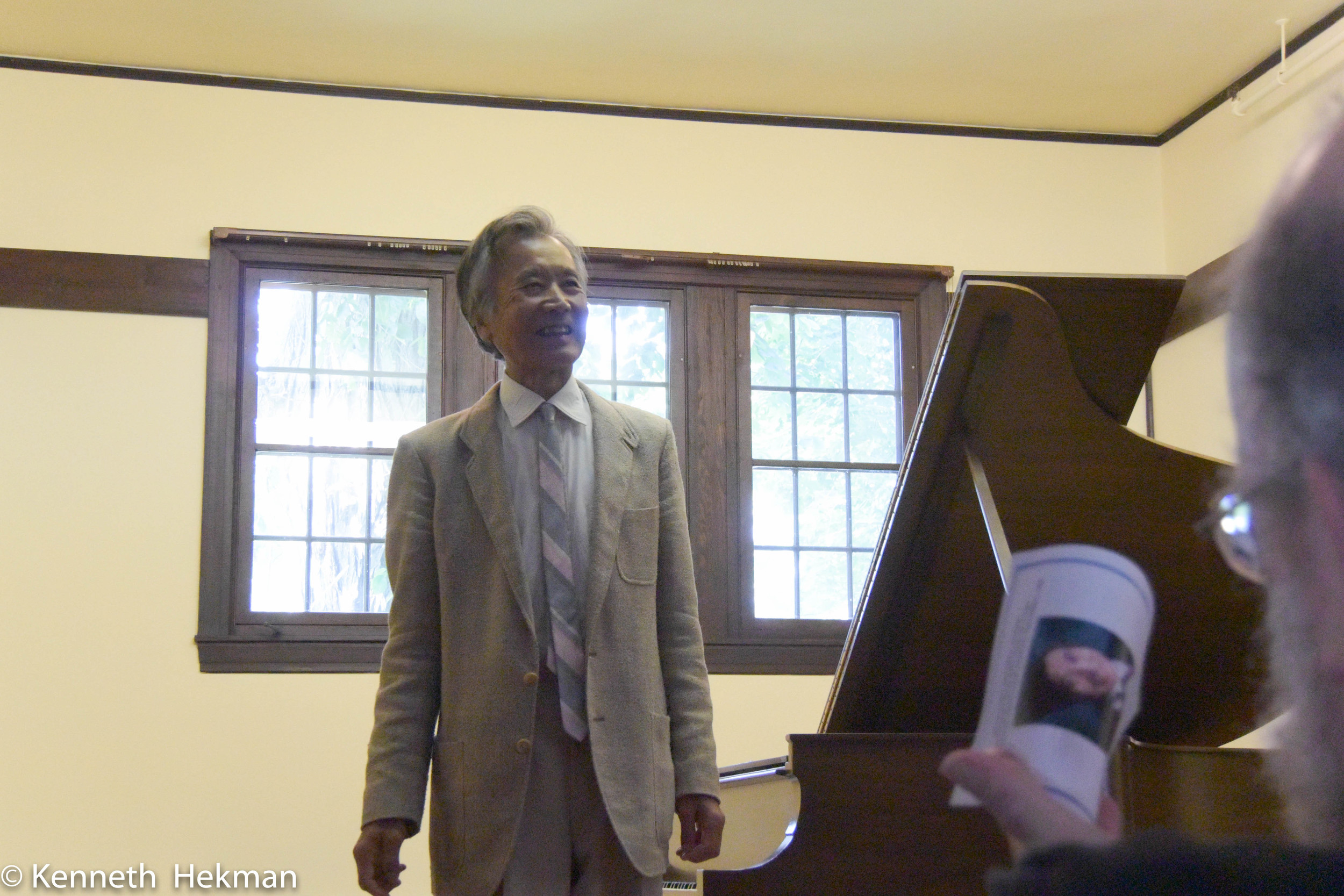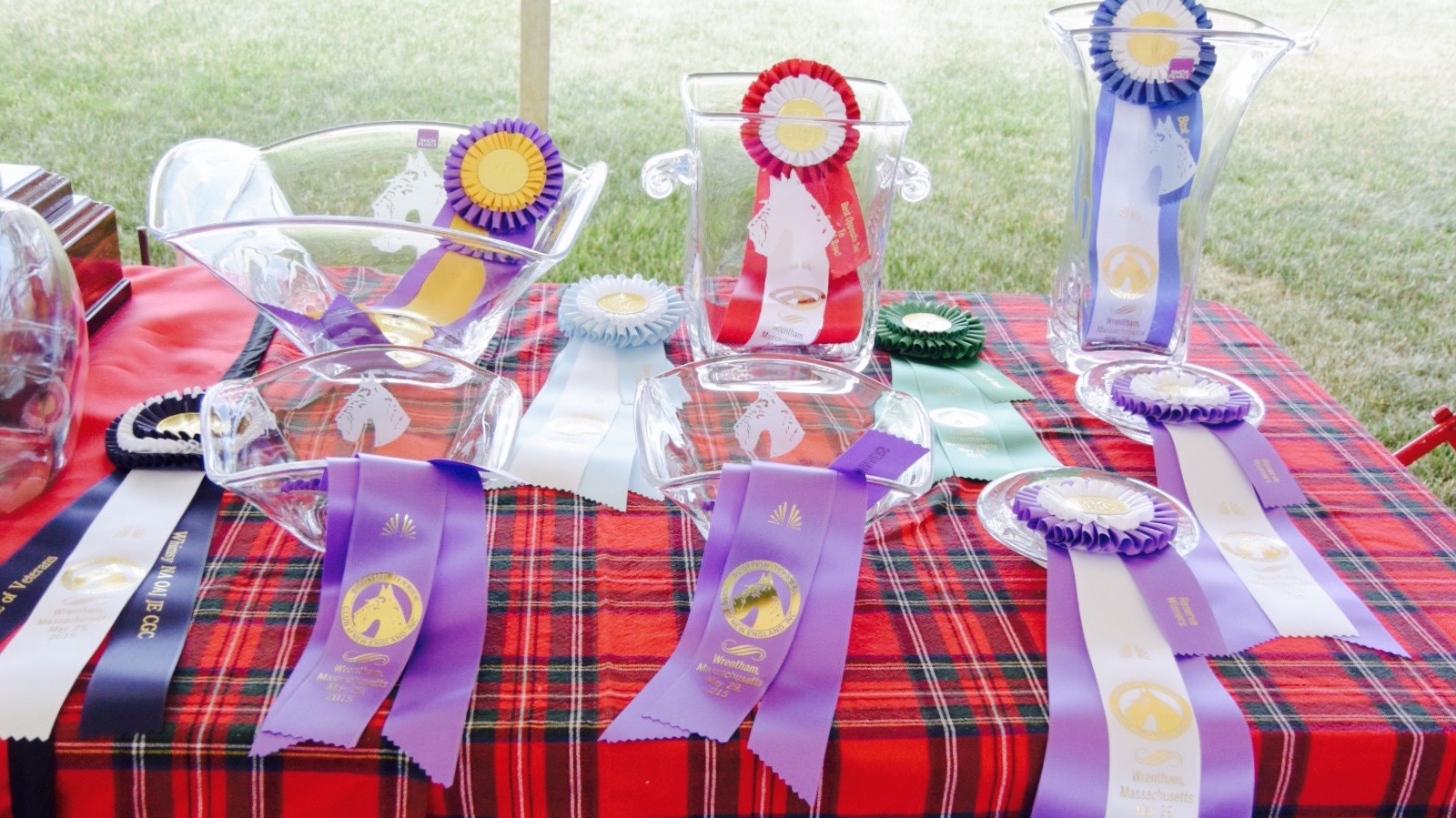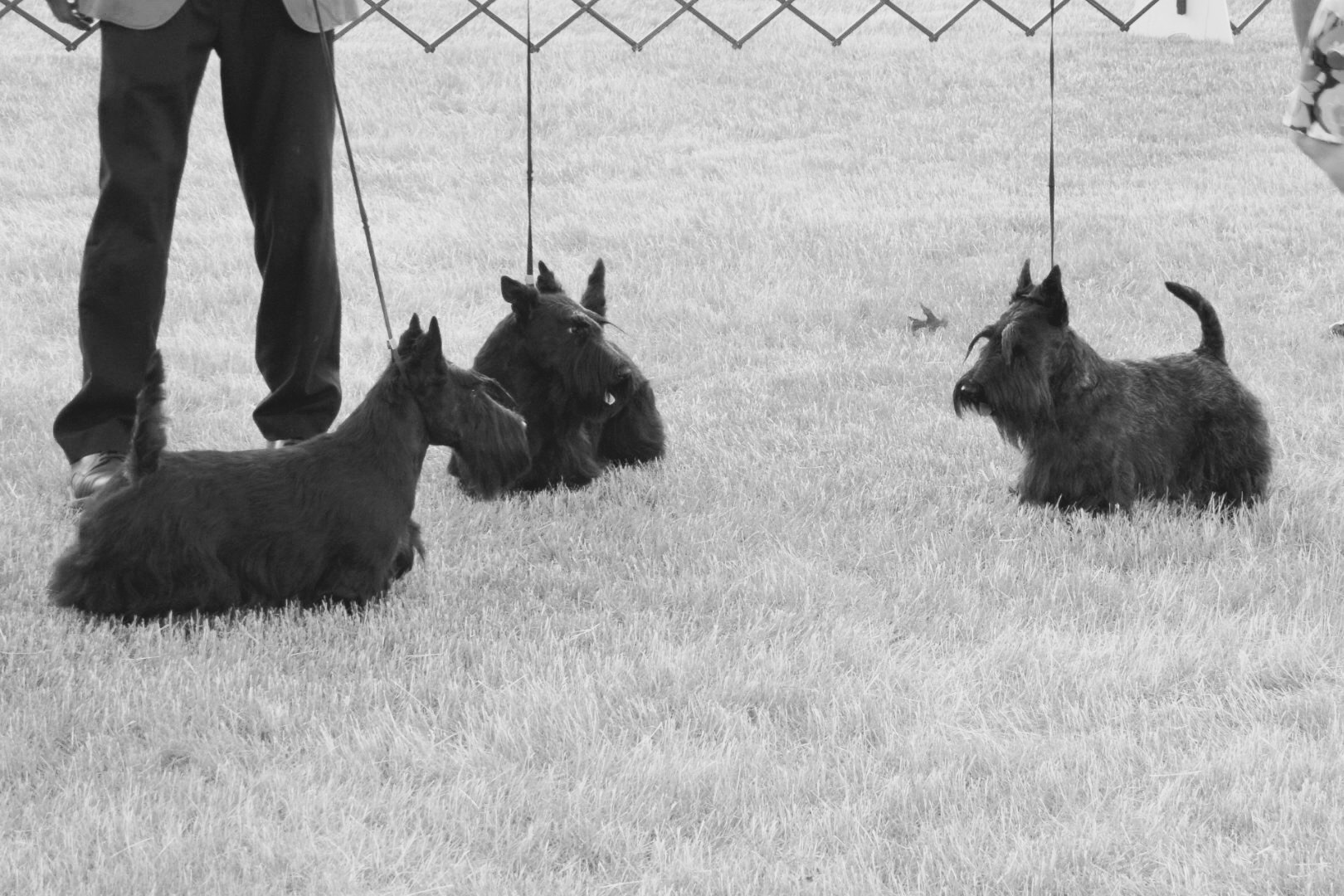
The mission of this Blog is to share
our activities,
provide facts about our breed,
and address
pertinent timely issues.
You may wish to volunteer or donate to our work.
Agility Trials April 23-24 2016
Here are some pictures from our recent successful Agility Trial
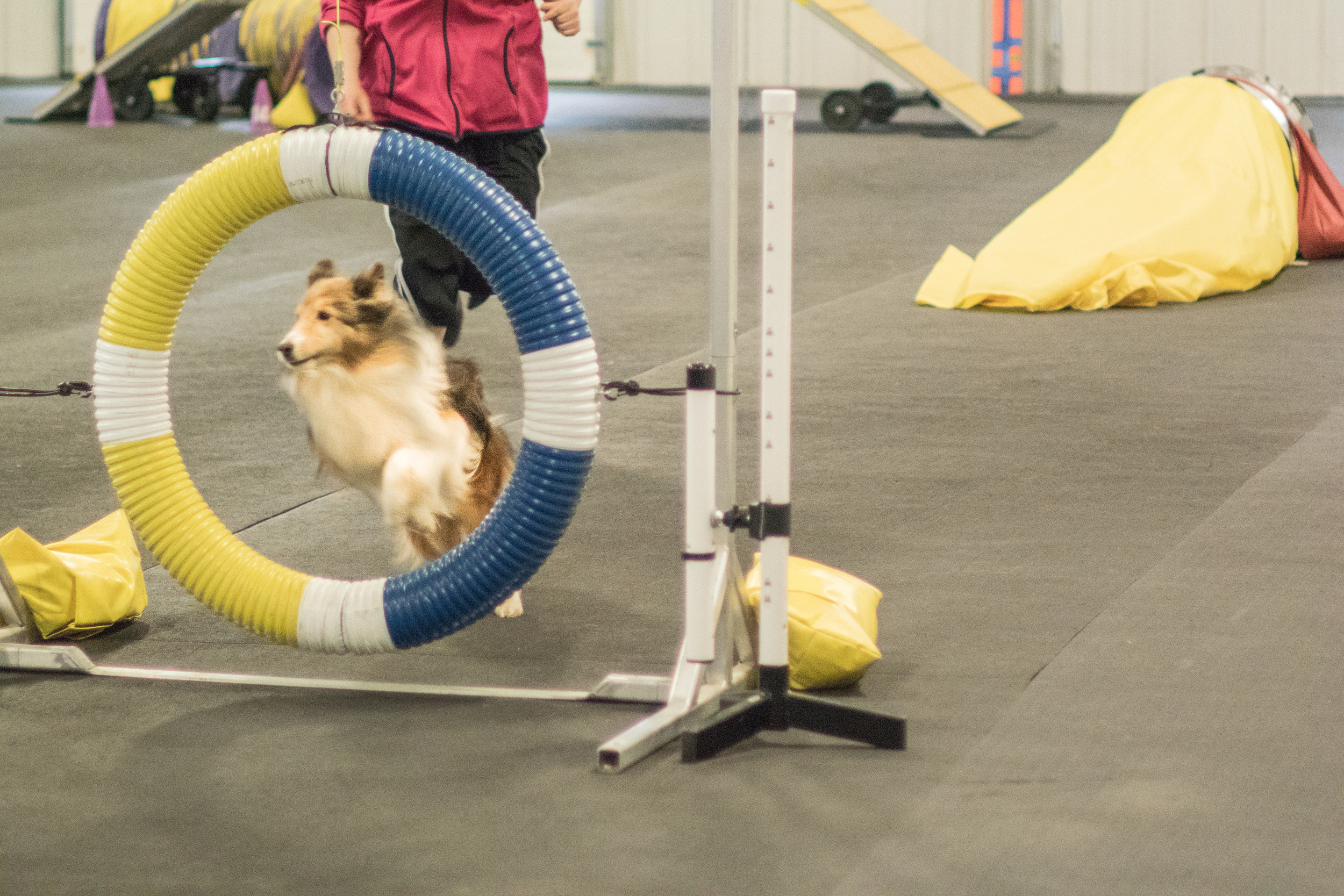
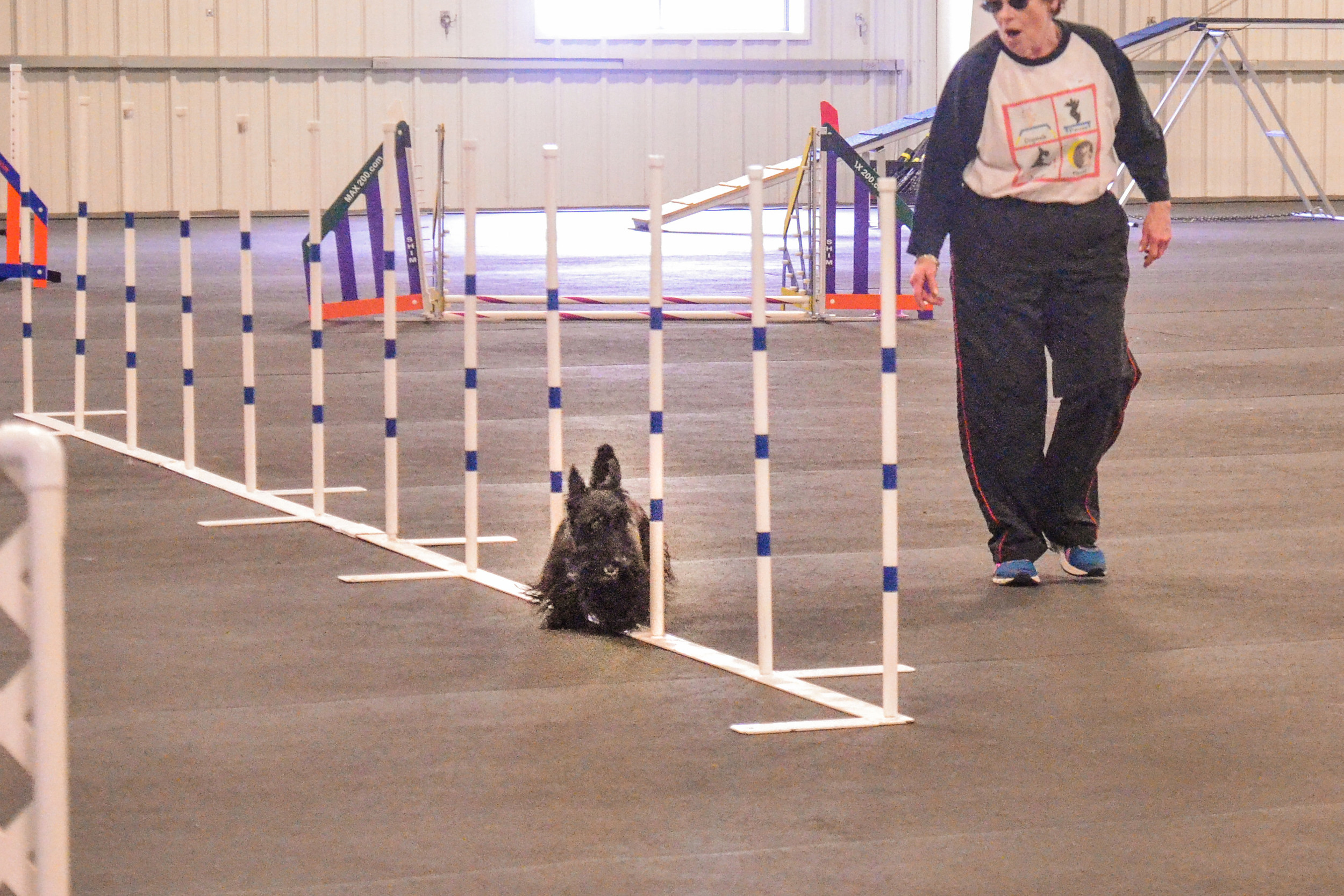

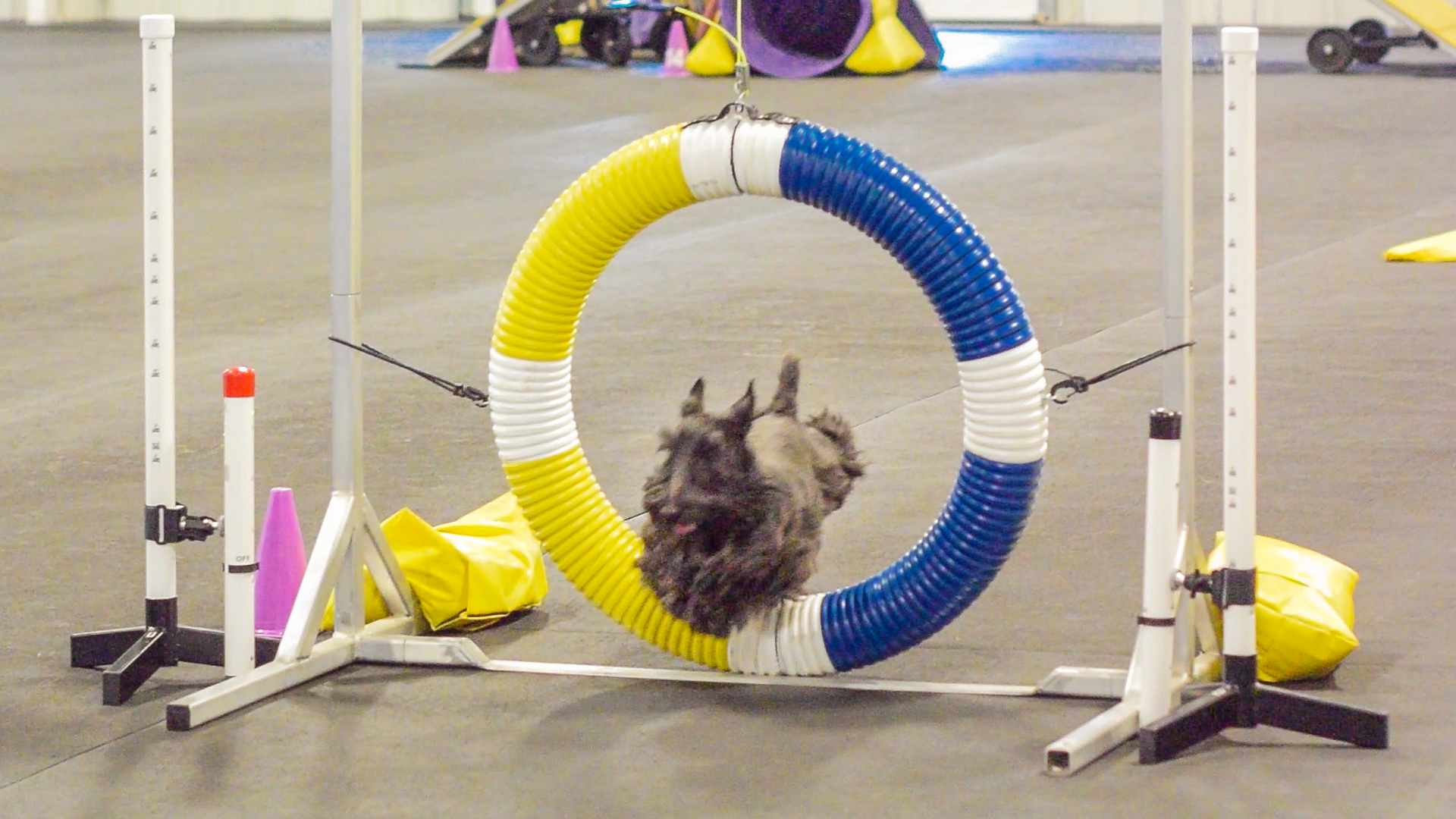
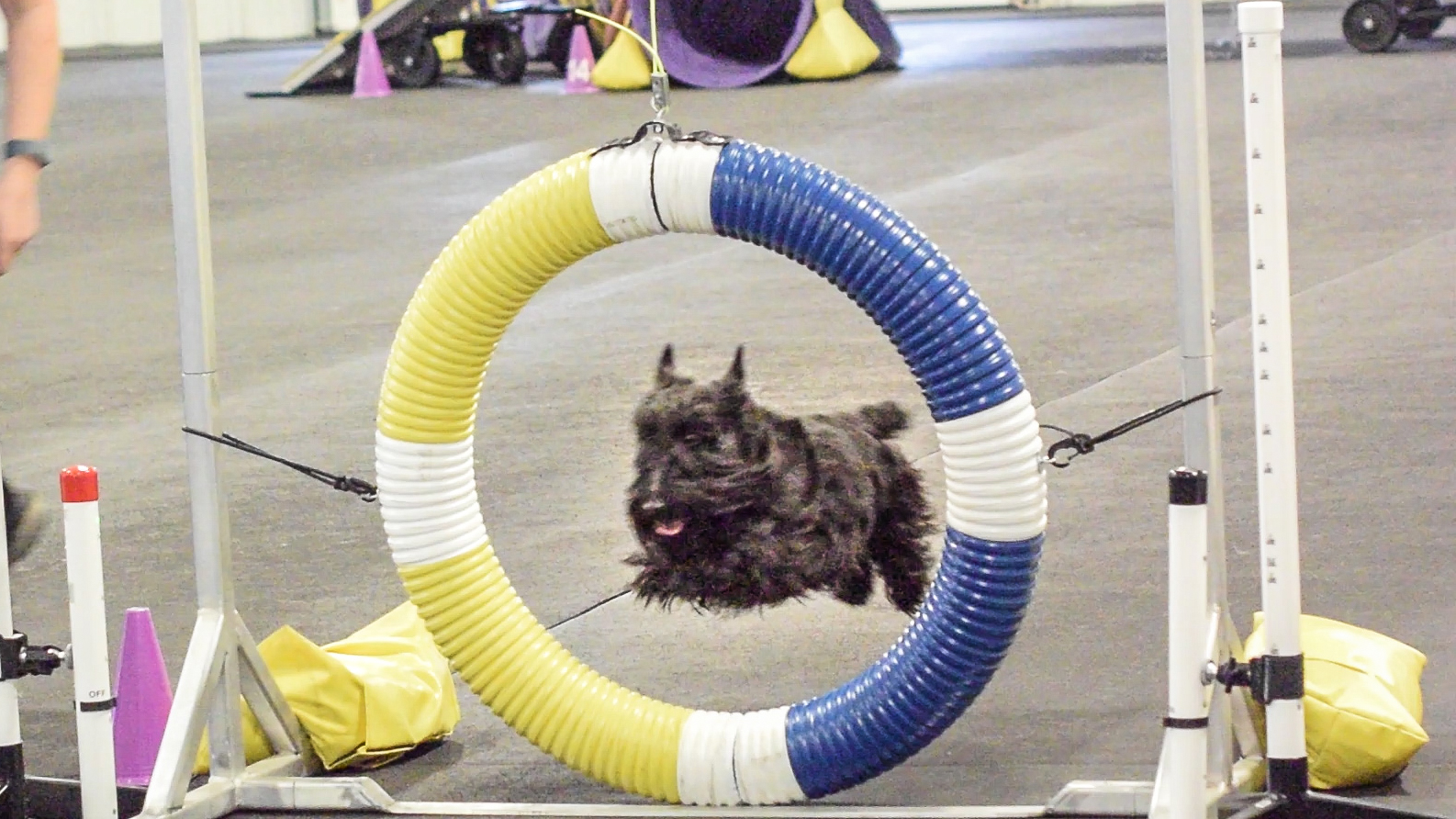
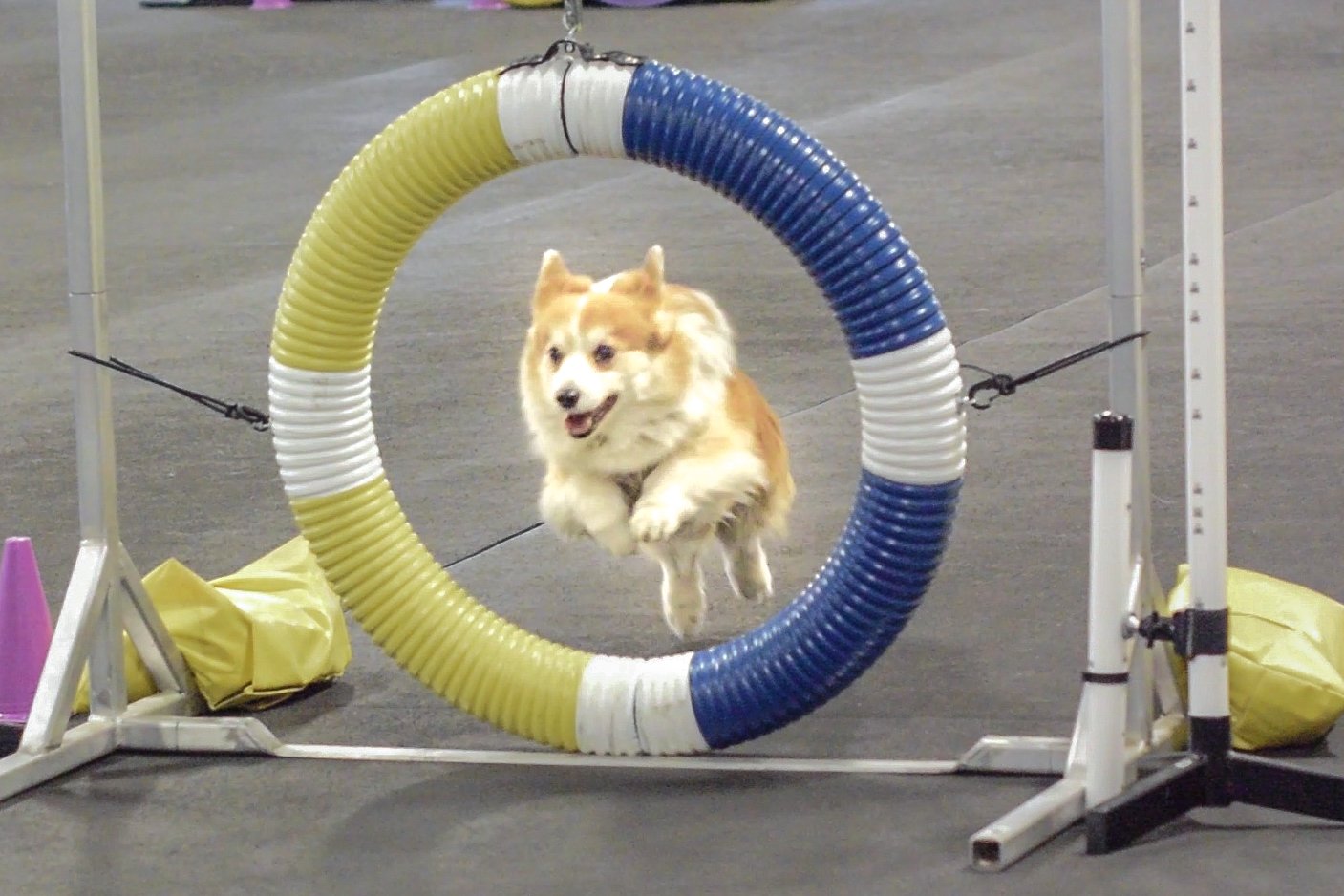
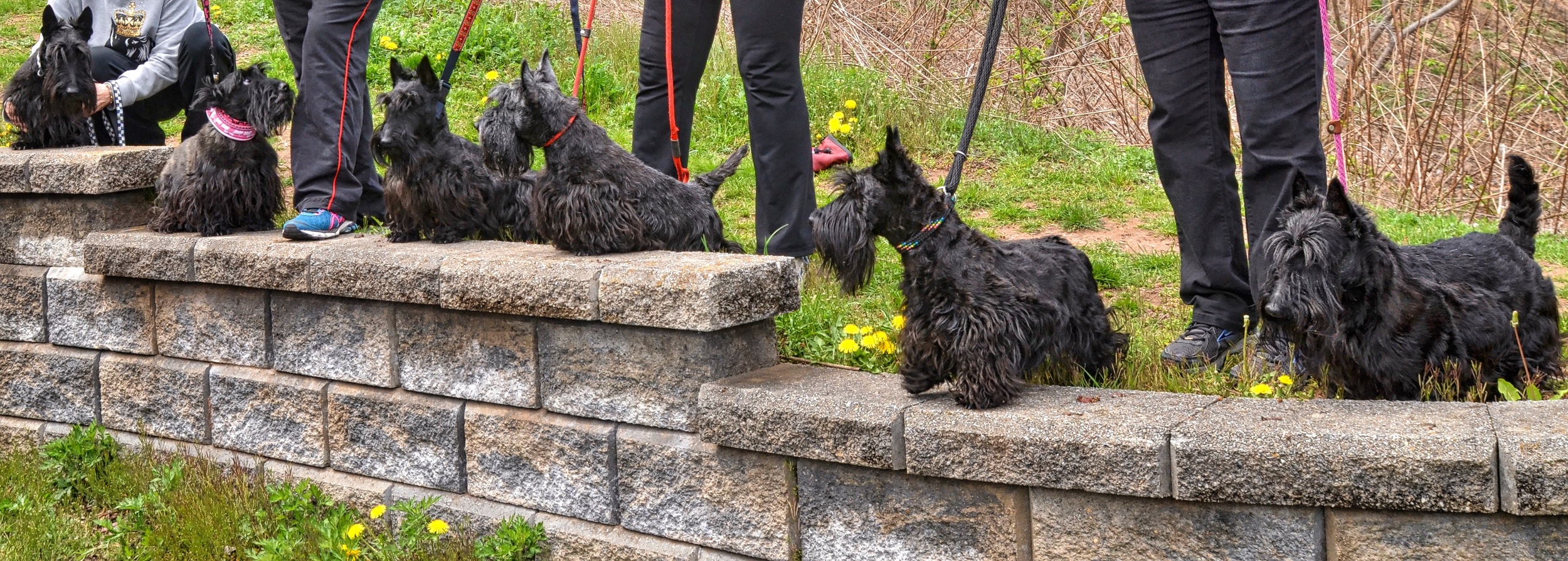
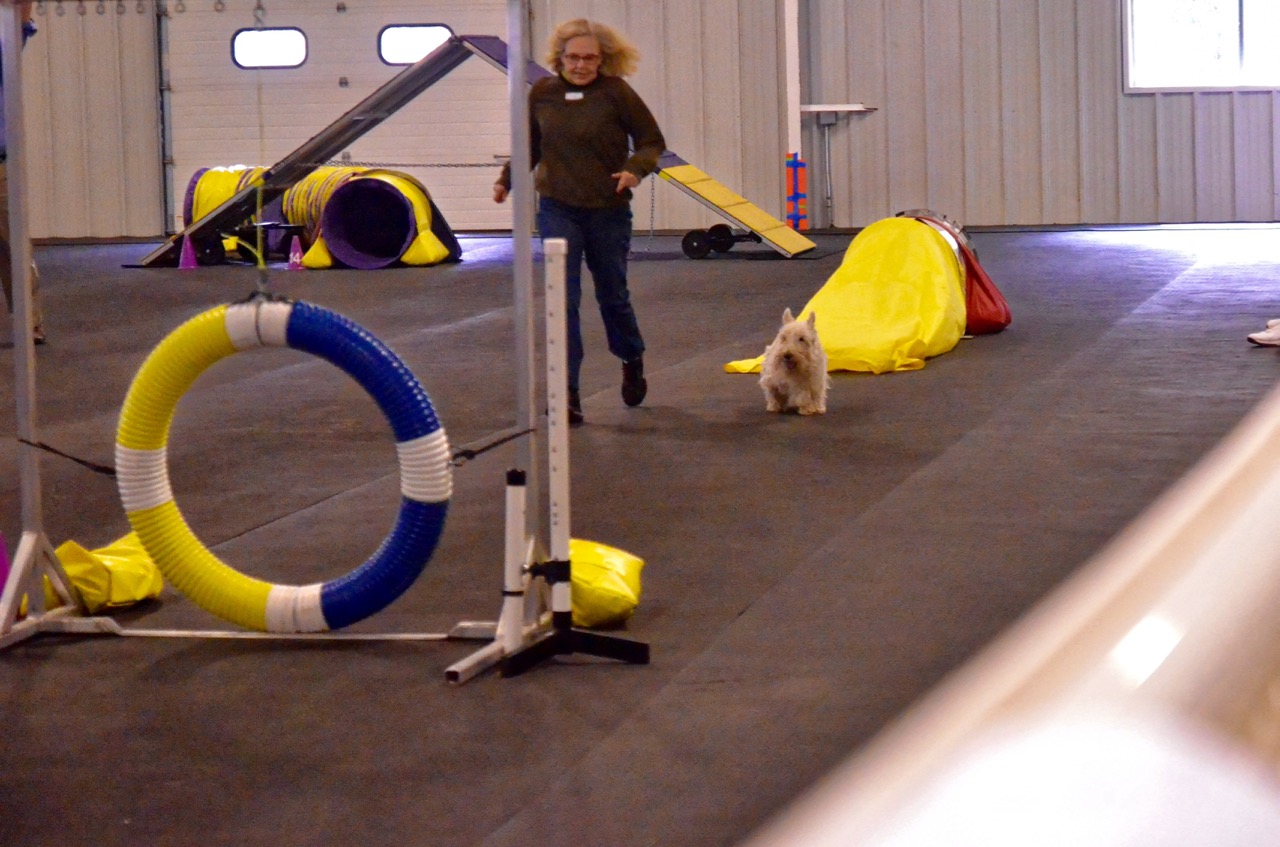
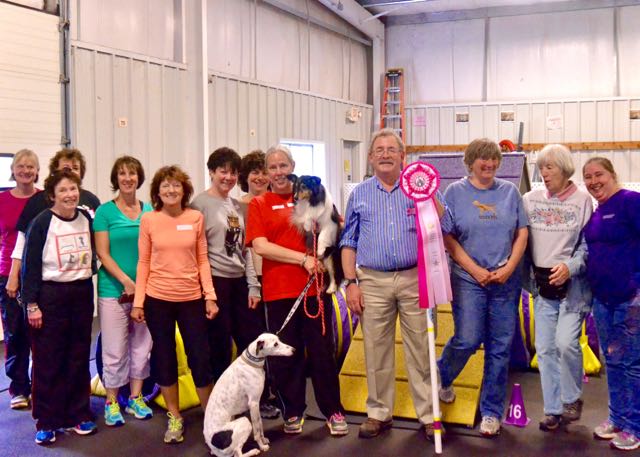
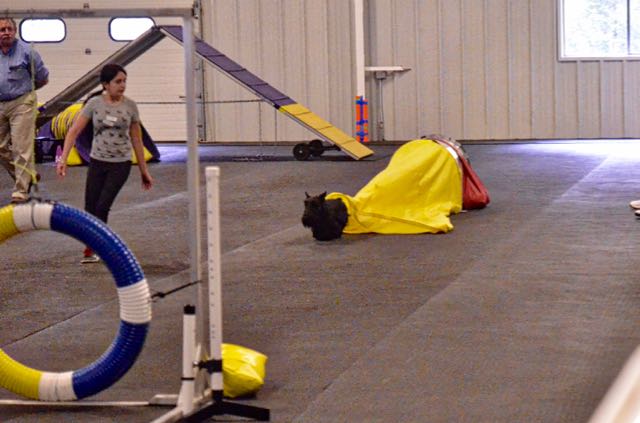
Learn more about Agility at the AKC site.
Earthdog Test
Scotties in Earthdog Tests By John McNabney
The Scottish Terrier was developed in the highlands of Scotland to hunt and kill varmints that destroyed crops or small livestock. Given the economic conditions in that region for centuries, dogs that were not functional were not kept as pets. If a dog could not perform its intended function, it was disposed of. This form follows function style of breeding (if it could not function, it was not bred) is what accounts for the personality, instincts, and form of the present day Scottish Terrier. Most of the quarry dwelled in small underground dens, so it was incumbent on the dog to locate the den, determine if it was inhabited and if so, to enter and engage the quarry and either fight it to the death or to drag it out or the den so that its handler could kill it.
The AKC Earthdog Test was established to demonstrate if a dog possessed the necessary physical and mental traits to perform those functions that were fundamental to the development of the breed. Participation is limited to those breeds that were developed for underground den work consisting primarily of short legged terriers and dachshunds. There are three titling classes and one instinct class at an AKC Earthdog Test. The titling classes are Junior Earthdog, Senior Earthdog and Master Earthdog. The instinct test is the Introduction To The Quarry class. The class qualifying and titling requirements are described below.
General
In all tests a scent line is laid from the quarry den through the active tunnel and out to the release point. This scent line is usually “rat tea” consisting of water with rat urine and dissolved rat feces.
Working is defined as aggressive action such as attaching the bars, digging, barking or whining within 12 inches of the quarry. A change in the nature of the work or brief pauses (less than 10 seconds) are not penalized, nor is dirt removal from the den area so that the dog may continue to dig at the den. Staring or “active staring” is not considered working.
The rats are in a metal cage in a den at the end of the tunnel separated from the dog by 1”dowels make of wood or plastic. The rats can not be removed from their den during the test except when required in the Senior Class.
The tunnel is 9” x 9” inside with a dirt floor and totally underground. The tunnel is to be light tight so that the dog is in total darkness after the first corner. It may be permanently installed in the ground with a removable top for cleaning and scenting or built in sections that are removed from the ground after each test.
The release point is clearly marked and can not be passed by the dog or handler before the release command is given by the judge. The dog may be brought to the release point on lead or carried to the release point by the handler. The dog may be released by being dropped by the handler from a point no higher than the waist or released on the ground. Tossing or pushing the dog towards the entrance is a disqualification. A single command may be given by the handler on releasing the dog. While walking up to the release point and before the release the handler may talk to the dog. The dog MUST run without a collar or it will be disqualified. This is a safety issue as a collar may catch in the tunnel and cause injury to the dog.
Introduction To The Quarry
In this class the tunnel is 10 feet long with 1 corner. The release point is 10 feet from the entrance to the den and the entrance is fully visible to the dog from the release point and inviting to enter. The handler brings the dog to the release point and at the direction of the judge, releases the dog with a single command. If the dog is unsure about entering the den or can not find the den, the handler may move to the entrance and tap on the tunnel and/or give verbal encouragement to the dog to enter. However, making contact with the dog will preclude qualification. Once the dog enters the tunnel, the handler must remain silent. The time begins when the dog enters the den the first time. The dog has 2 minutes to reach the quarry and begin working and must work for 30 seconds. The dog may reach and leave the quarry within the 2 minute time period without penalty but once working has begun the dog cannot leave the quarry or stop working. After completing the test, the dog is removed from the tunnel at the den end through a door on the top of the tunnel. During the 2 minute time period, if the dog reaches the quarry but does not start working, the judge may scratch on the tunnel or shake the rat cage to encourage the dog to begin working without penalty. Such encouragement must stop when the dog begins working. Reaching the quarry and beginning to work within the 2 minute time period and working continuously for 30 seconds is a qualifying performance.
Junior Earthdog
In this class the tunnel is 30 feet long with 3 corners. The release point is 10 feet from the entrance to the den and the entrance is fully visible to the dog from the release point and inviting to enter. The handler brings the dog to the release point and at the direction of the judge, releases the dog with no more than a single command. Once the dog is released the handler must remain stationary and silent. The dog has 30 seconds to reach the quarry from the release. Once reaching the quarry, the dog must remain at the quarry for the remainder of the test in order to qualify. When reaching the quarry the dog has 30 seconds to begin working and must work for 1 minute. The judge may motion to the handler to come to the den area before the working is complete, but the handler must remain silent during the entire working period. Once the working period is complete, the dog is removed from the tunnel at the quarry end through a door in the top of the tunnel. There is no penalty if the dog backs up from the den or otherwise prolongs the removal process. If the dog has met the time requirements and the handler has not caused a disqualification, the dog has passed the test.
Senior Earthdog
In this class the tunnel is 30 feet long with 3 corners. Additionally, at the 2nd and 3rd corners are a false den and a false exit. The false den is approximately 5 feet of tunnel with no exit, a door on the top of the den at the far end and scented bedding at the far end. The false exit is approximately 6 feet long with one corner. The false exit is not scented. The sequence of false den and false exit is not prescribed and can be in a variety of configurations as shown in the den diagrams at the end of this article. The release point is 20 feet from the entrance and more than that from the false exit. Neither the entrance nor the false exit can be seen by the dog from the release point. Construction of the entrance and false exit shall require to dog to climb down to gain entry. The handler may carry the dog or bring the dog on lead to the release point. Before releasing the dog the handler may talk to the dog. Once directed to release the dog by the judge, the handler may drop or release the dog with no more than a single command. Once the dog has been released the handler must remain stationary and silent until directed to recall the dog by the judge. The dog has 90 seconds to find the entrance and reach the quarry. If the dog enters the false exit before entering the entrance it must come back to the entrance and return towards the quarry, either above ground or through the tunnel before reaching the quarry. The dog must transverse the entire tunnel from the entrance to the quarry in order to qualify. The dog
may investigate the false den, but will be disqualified if it begins working in the false den. The dog may exit and enter the false exit as many times as it wants as long as it reaches the quarry in the 90 seconds. Once reaching the quarry, the dog has 15 seconds to begin working and must work for 90 seconds. After the 90 seconds, the rats are removed from the den and the judge will instruct the handler to recall the dog. The handler may recall from the release point or the entrance or some point in-between. If the dog comes out the false exit the handler may more towards the dog and may recover the dog anywhere above ground. If the dog re-enters the tunnel the handler must move back to the entrance before recalling the dog again. During the recall, the handler may call, use a whistle or scratch on the tunnel at the entrance. No other noise makers, toys, food, etc are allowed. The handler has 90 seconds to get the dog under physical control. If all of these requirements are met, the dog has qualified.
Master Earthdog
In this test the tunnel is identical to the Senior Tunnel with the additions of a squeeze section and a roller section. These sections are in the second and third segments of the tunnel in any sequence. The squeeze section is 18” long with the width of the tunnel reduced to 6”. The roller section consisted of the piece of 6” plastic pipe running the full width of the tunnel constrained by a 1” dowel located 3 inches above the tunnel floor running through the center of the pipe. The roof of the tunnel is raised 6 inches for a length of 18 inches centered on the dowel. For dogs the size of a Scottie, the dog must move the pipe forward as far as the dowel will allow it to roll, climb over the top of the pipe and then roll the pipe backwards as it comes over the top so that it may get back into the tunnel at the end of the 18” section of raised roof. The squeeze requires the dog to force its way through the narrowed section, challenging any claustrophobic tendencies. The false den and false exit are the same as in the Senior Tunnel.
This test is run by a brace of dogs, paired together by a random draw at the beginning of the class. At the beginning of the test, the tunnel entrance and false entrance are blocked by dowels and the rats are placed behind the dowels at the tunnel entrance. The test begins with a 200 yard walk-up from the release point to the tunnel entrance. During this walk-up the dogs must hunt actively without interfering with each other. Approximately 100 yards from the release point there will be a false tunnel that is unscented and approximately 4 feet long. Upon reaching the false tunnel each handler must have their dog investigate the false tunnel and indicate that it is empty by taking no interest in working the false tunnel. This must be done in the presence of the judge who is accompanying the handlers. The handlers and judge will stop their forward progress when they reach a point approximately 20 feet from the entrance to the tunnel. Each dog must find and mark the entrance. Marking is indicated by the dog entering the entrance and remaining there until removed by the handler at the direction of the judge. The dogs are allowed to investigate the entire tunnel area until finding the entrance, but once they enter the entrance they must remain there until removed by the handler. If the dog(s) can not find the entrance, the judge may direct the handler to move towards the entrance to indicate to the dog where the entrance is, but the handler cannot direct the dog to the entrance. The first dog to mark is the first dog to run and the second dog is placed in the honoring position (a stake with a short leash attached). The handlers are directed to face their dogs away from the entrance while the rats are removed from the entrance and returned to the den at the end of the tunnel. Once the rats are in place, the honoring dog is secured to the honoring stake and the first dog is brought to the entrance and released by the handler. If the dog exits the tunnel, the handler may give a second command without penalty. The dog has 90 seconds to reach the rats, negotiating the squeeze and roller, false den and false exit, 15 seconds to begin working and must work for 90 seconds. After 60 seconds, the judge will begin to scratch on the top of the tunnel above the dog for the remaining 30 seconds of this portion of the test. The dog must continue working without break despite this
distraction. After completing the working portion of the test, the handler has 15 seconds to remove the dog from the den through a door on the top of the tunnel. The dogs are swapped with the working dog placed in the honoring position and the honoring dog taken to the entrance and released by its handler. While in the honoring position, the honoring dog must remain quiet and still. A little noise and movement is permitted, but it can not be a distraction to the judge. The elements of the test are an active hunt without interfering with the bracemate during the walk-up, investigating the false tunnel under the direction of the handler, finding and marking the entrance, finding the quarry, working the quarry and being removed from the tunnel meeting the time requirements for each portion and completing the honoring requirements. Passing all elements will result in a qualifying score.
Title Requirements
Junior Earthdog (JE)
Qualifying in 2 tests under 2 different judges.
Senior Earthdog (SE)
Qualifying in 3 tests under 2 different judges
Master Earthdog (ME)
Qualifying in 4 tests under 3 different judges
Endurance Earthdog (EE)
Qualifying in 5 different tests in both the Senior and Master classes at the same test (a Double
“Q”). This title may be awarded multiple times by earning an additional 5 Double “Qs” for each award. Each award is indicated by a number at the end of the title (i.e. EE3 if the dog has earned 15 Double “Qs”)
Training
Working the quarry is an instinct which may be developed by repeated exposure to the rats and encouragement when interest or aggression towards the rats is displayed. Working can not be “trained” in the normal sense of training as that would lead to serious problems in the Senior Class where a recall is required.
Entering the tunnel can be trained by starting with a short section of tunnel and encouraging the dog to pass through, using food or other enticement to get the dog to enter. Some handlers require their dogs to pass through the tunnel in order to get to their dinner. Once the dog willingly enters the tunnel, it can be extended and corners added as the dog gains confidence dealing with the constricting nature of the tunnel.
Dog aggression can not be tolerated in the Master Class. If your Scottie has any tendency to be aggressive towards other dogs, or overly interested, especially males investigating females, it will be necessary to work through this tendency by socialization and controlled engagement with many different dogs. Females in season can not compete in a test in any class so males will not be distracted by this factor.
Agility Trials August 22 &August 23 Gallery
Another successful Agility Trial. A special thanks to all who helped out at the Trials. We are encouraged by the participation and spirit of the event. We are especially indebted to Lisa Gomes who was the chair, participant and volunteer. Way to go Lisa. The pictures below show some of the excitement and winners.
Thank you Masanobu
On Saturday June 20th, 2015 we were afforded a wonderful concert in Camden Maine at the St. Thomas church. Mr Masanobu Ikemiya graciously donated his time and considerable talent for the benefit of Scottish Terrier Rescue. A reception followed where all who attended could mingle, and speak with Masanobu and his wife Tomoko
The program included classics of Liszt (Liebestraume) and Chopin (Prelude in D-Flat major, Etudes in E minor and E major and the "Heroic" Polonaise), and a stunning collection of Ragtime: Debussy, Lensberg, Arndt and Joplin, the latter two also arranged by Mr Ikemiya. He concluded with Gershwin, Rhapsody in Blue (1924). This early version discover by Mr. Ikemiya in his research is a robust Jazz version suited well to his enthusiastic and accomplished style. If you goggle his name you will find facts of his biography, discography, and current activities in Maine. You can find a performance of Rhapsody in Blue on You Tube. The energy and mastery he demonstrated will be remembered by all.
The Scottish Terrier Club of New England wishes to again thank you for your generous gift for Scottish Terrier Rescue.
Our 74th Sweepstakes and Specialty
There was a hush, then the decision. Congratulations to all participants
INDEX Click to see more
-
December 2025
- Dec 10, 2025 Earth dog trials Dec 10, 2025
-
November 2025
- Nov 6, 2025 Annual Banquet Nov 6, 2025
-
September 2025
- Sep 30, 2025 Rescue event Sep 30, 2025
-
July 2025
- Jul 19, 2025 Summertime Heat and your Scottie. Jul 19, 2025
- Jul 4, 2025 Membership Meeting Jul 4, 2025
-
June 2025
- Jun 14, 2025 STCNE SPECIALTY Jun 14, 2025
-
April 2025
- Apr 26, 2025 April 2025 Agility trials Apr 26, 2025
-
March 2025
- Mar 22, 2025 March 16 Brunch with speaker and live auction. Mar 22, 2025
-
November 2024
- Nov 27, 2024 ANNUAL BANQUET Nov 27, 2024
-
October 2024
- Oct 19, 2024 EARTHDOG TRIALS Oct 19, 2024
- Oct 2, 2024 Renee Shulman Senior Scottie Rescue Oct 2, 2024
-
August 2024
- Aug 28, 2024 Membership meeting August 17 Aug 28, 2024
-
June 2024
- Jun 8, 2024 Specialty and Sweepstakes Jun 8, 2024
-
May 2024
- May 3, 2024 AGILITY TRIALS 2024 May 3, 2024
-
March 2024
- Mar 18, 2024 COCKTAIL SOCIAL AND LUNCHEON March 10,2024 Mar 18, 2024
-
February 2024
- Feb 7, 2024 Winter fun Feb 7, 2024
-
November 2023
- Nov 14, 2023 Annual Meeting and Awards Banquet November 5,2023 Nov 14, 2023
-
October 2023
- Oct 19, 2023 EARTH DOG TRIALS. Oct 19, 2023
-
September 2023
- Sep 28, 2023 Scottish Terrier Club of New England Rescue event. Sep 28, 2023
-
June 2023
- Jun 4, 2023 Scottish Terrier Club of New England Specialty and Sweepstakes Jun 4, 2023
-
May 2023
- May 7, 2023 Agility Meet April 22-23 May 7, 2023
-
April 2023
- Apr 12, 2023 St. Patrick Day Corned Beef and Hash at the Public House Apr 12, 2023
-
December 2022
- Dec 9, 2022 December Board meeting and Celebration of the season Dec 9, 2022
-
November 2022
- Nov 13, 2022 Awards Banquet and Annual meeting Nov 13, 2022
-
October 2022
- Oct 18, 2022 Earthdog Oct 18, 2022
-
September 2022
- Sep 15, 2022 Senior Scottie Rescue. September 10, 2022 Sep 15, 2022
-
June 2022
- Jun 12, 2022 Annual STCNE Sweepstakes and Specialty. June 3, 2022 Jun 12, 2022
-
May 2022
- May 15, 2022 Annual STCNE all breed Agility trials May 15, 2022
-
March 2022
- Mar 17, 2022 Annual Corned Beef and Cabbage Luncheon Mar 17, 2022
-
November 2021
- Nov 12, 2021 ANNUAL AWARD BANQUET AND MEMBERSHIP MEETING Nov 12, 2021
- Nov 3, 2021 EARTHDOG TRIALS Harwinton CT October 17 Nov 3, 2021
-
September 2019
- Sep 20, 2019 Scottish Terrier Fall Parade. September 15, 2019. The Publick House. Sturbridge, MA. Sep 20, 2019
-
April 2019
- Apr 22, 2019 AGILITY APRIL 20 Apr 22, 2019
-
July 2018
- Jul 6, 2018 2018 Maine Rescue Benefit Jul 6, 2018
-
June 2018
- Jun 1, 2018 June 1, 2018 STCNE Specialty and Sweepstakes Jun 1, 2018
-
April 2018
- Apr 22, 2018 Agility Trials April 21, 2018 Apr 22, 2018
- Apr 9, 2018 corn beef and cabbage benefit Apr 9, 2018
-
October 2016
- Oct 17, 2016 Earthdog trials Oct 17, 2016
-
May 2016
- May 30, 2016 Agility Trials April 23-24 2016 May 30, 2016
-
December 2015
- Dec 2, 2015 Annual Awards banquet and Auction Dec 2, 2015
-
September 2015
- Sep 26, 2015 Earthdog Test Sep 26, 2015
- Sep 9, 2015 Agility Trials August 22 &August 23 Gallery Sep 9, 2015
-
July 2015
- Jul 7, 2015 Thank you Masanobu Jul 7, 2015
-
June 2015
- Jun 3, 2015 Our 74th Sweepstakes and Specialty Jun 3, 2015
-
April 2015
- Apr 29, 2015 AGILITY APRIL 18-19 Apr 29, 2015
-
January 2015
- Jan 17, 2015 The Scottish Terrier And Obedience Jan 17, 2015
- Jan 17, 2015 Scottish Terrier Obedience- Part 2 - A Place for All Jan 17, 2015
- Jan 17, 2015 Obedience Part 3 -Ray Rinaldi Jan 17, 2015
- Jan 16, 2015 HEALTH BLOG Jan 16, 2015
- Jan 16, 2015 Common Sense Dog Safety ideas from Charlie Stevens Jan 16, 2015
- Jan 14, 2015 IN REMEMBRANCE. Jan 14, 2015
- Jan 14, 2015 Agility events Jan 14, 2015
- Jan 11, 2015 Rescue 2014 by David Caudle Jan 11, 2015
- Jan 11, 2015 Facebook and its importance to the Scottish Terrier Club of New England Jan 11, 2015
